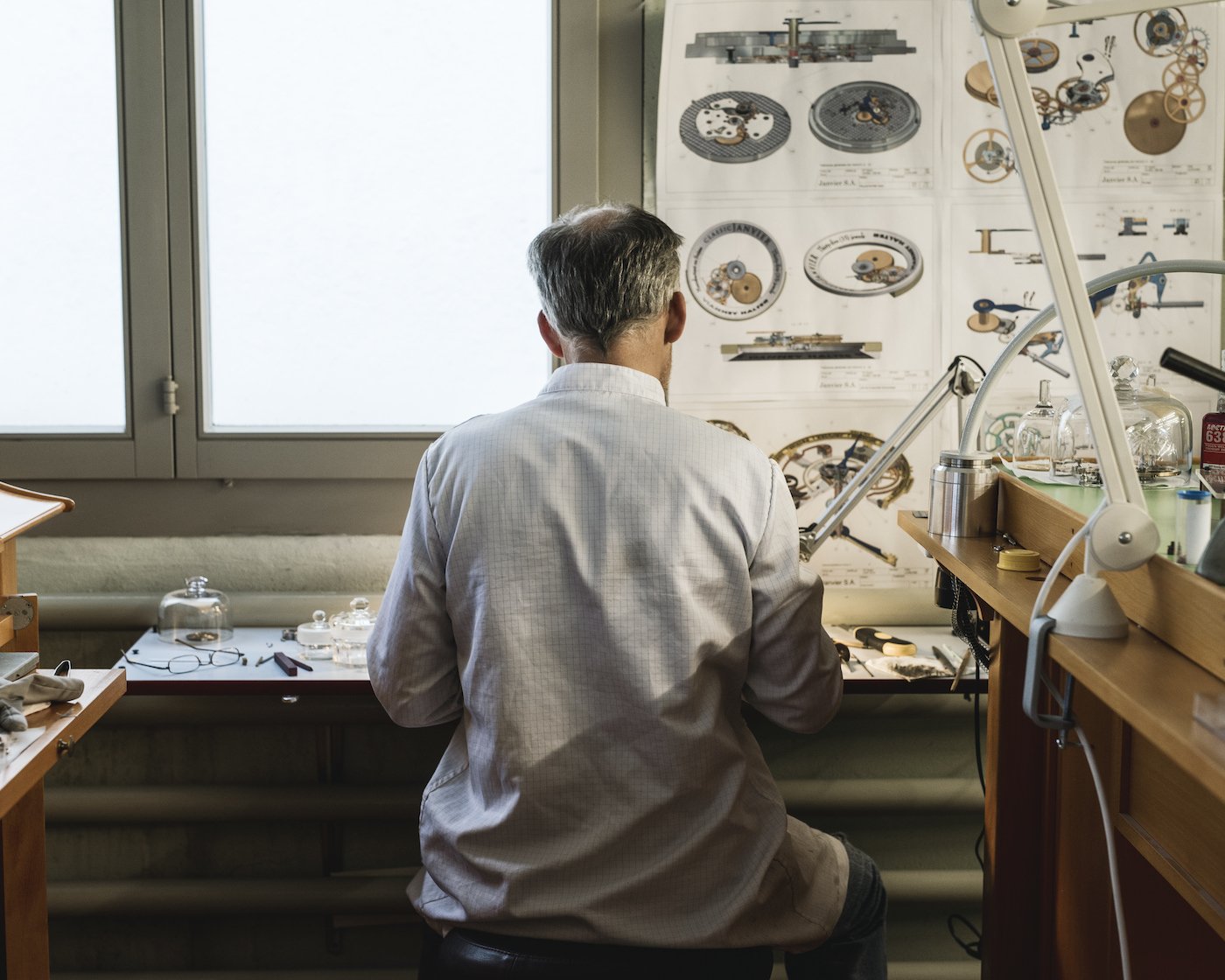

Report: Master watchmakers
A series of portraits of master watchmakers by Europa Star

Lives and lessons of master watchmakers
ur choice was necessarily subjective and we hope those who were not included will not take umbrage. We did not forget them, but we could not interview everyone.
Even so, our selection aims to be representative of the independent master watchmaker constellation, a mixture of tutelary figures – Svend Andersen, Daniel Roth (now trading as Jean Daniel Nicolas) – flourishing, fulfilled master watchmakers - Kari Voutilainen, Denis Flageollet (De Bethune) – enquiring minds – Vianney Halter, Ludovic Ballouard – and young talent, represented here by Rexhep Rexhepi (Akrivia) and David Candaux.
Independents: a thumbnail sketch
They represent no more than a drop in the ocean of watches produced every year: taken all together a few hundred at the most. But what watches! Rare objects coveted by collectors the world over, which sell at a high price and represent the cream of mechanical watchmaking.
Although settled in Switzerland, their origins are many and varied – Marseilles, Nice, Brittany, the suburbs of Paris, Alsace, Finland, Denmark... David Candaux alone is a native of the Joux Valley and, with his watchmaker father, has his workshop in the small village of Le Solliat, a stone’s throw from the undisputed grand mas- ter of them all, Philippe Dufour.
All, or nearly all, chose to settle far from major centres, nestled deep in the Jura countryside or at the heart of the tranquil historic city centre of Geneva (Rexhep Rexhepi). But the most emblematic is Kari Voutilainen, who has just taken up residence in a veritable eagle’s nest, the so-called Chapeau de Napoléon (Napoleon’s Hat), a building set on a mountainside overlooking the Val-de-Travers, where you will also find Chopard, Michel Parmigiani (yet another great watchmaker who evolved from historical watches and restoration) and Bovet in its castle overlooking Môtiers.
No doubt they need to be far from the madding urban crowd to be able to work with patience and tenacity, free from external disturbances, with, to boot, cows and deer on the other side of their workbench window – and this is no cliché.
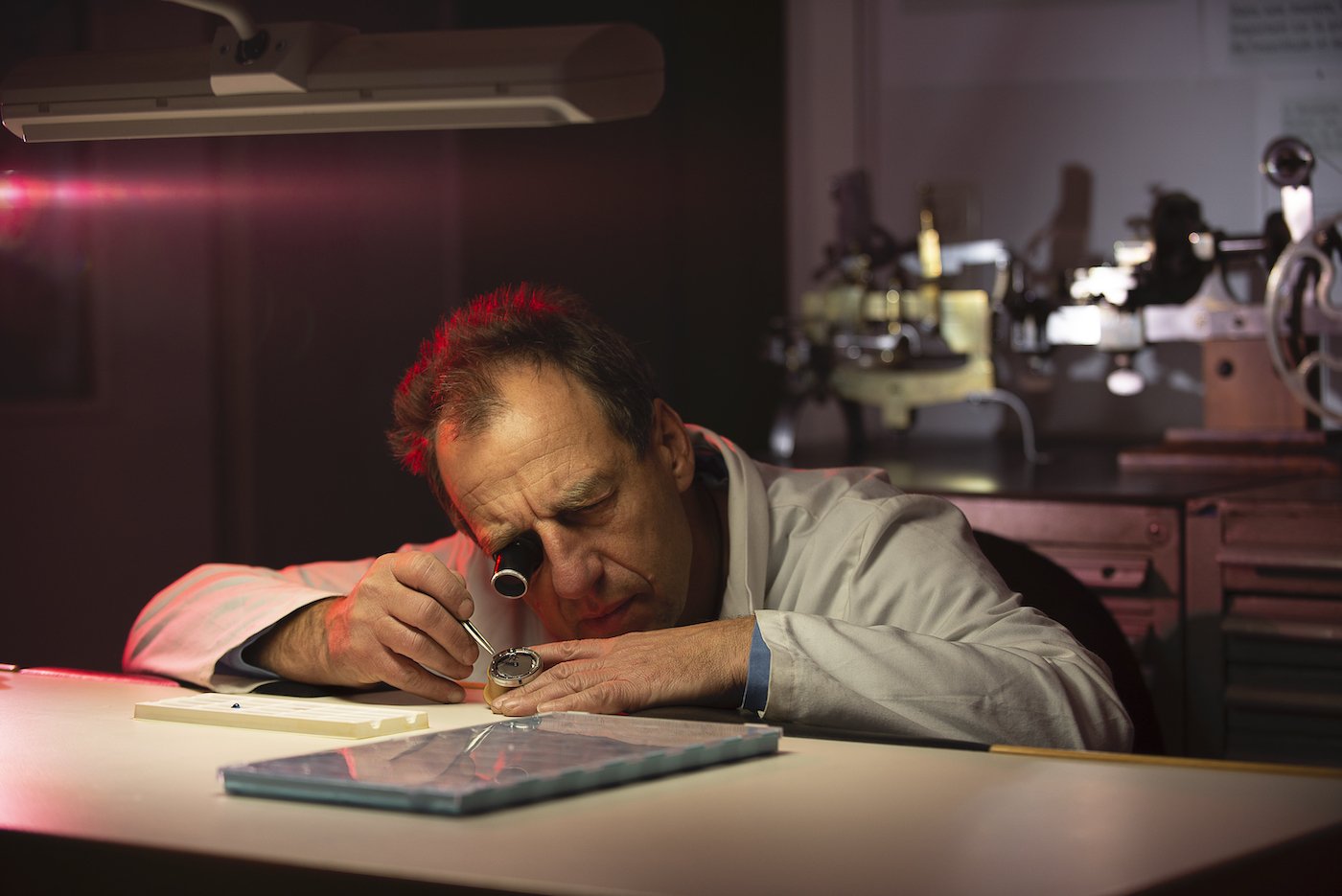
A life’s journey
The road towards and into independence is not carved out in advance and no manual or business school teaches it. It is a veritable life’s journey, one of rough terrain, ups and downs, triumphs and setbacks. “The world of watchmaking is a jungle,” was the message from virtually all of them.
For an independent watchmaker, however modest the production, pressures, avaricious margins of middlemen and spokes in the wheels abound. As do confidentiality agreements that bind them and prevent them from promoting their work for third parties, even though the latter are far more powerful. But what they all share and what unites them all in a way, beyond the squabbles so typical of human nature, is the passion for watchmaking that is a part of them and enables them to continue despite the unforeseen hazards they might encounter.
For all of them without exception, this passion has its origins in their childhood. Either a watchmaker father, a fascination for steam locomotives, the financial necessity of making their own toys, the painstaking construction of model boats or planes, the itching to understand how the cogwheels of an old alarm clock interact to turn the hands so accurately.
All clever with their hands, frequently unacademic, but intelligent and full of dreams, they gradually found their path and their salvation in watchmaking. And all are driven by a burning desire for independence, reinforced by stints in the major watchmaking companies. They are in love with freedom.
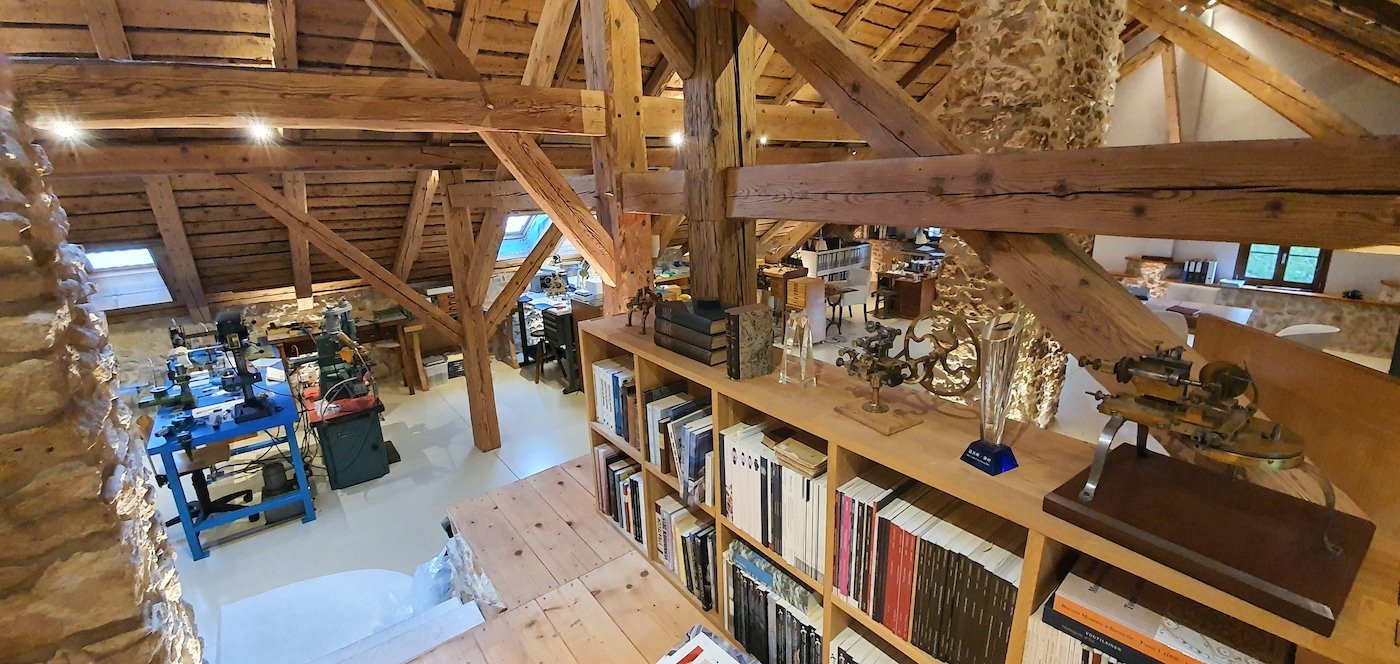
Transmission
Transmission is also a key concern of theirs, whether of the know-how that got them where they are today, or their duty of transmission to youngsters who share the same passion (like Denis Flageollet, who as part of the Secrets de Maîtres programme offers a well-attended introductory course in Art Mechanics every year at Sainte-Croix).
A spell of restoring antique timepieces is another semi-constant in their careers, a stage that enabled them to “plunge their hands into the history of watchmaking”, as one of them puts it.
Also, they all did a stint in major workshops or with large brands. A handful of formative names in their career crops up repeatedly: Patek Philippe, Audemars Piguet, Jaeger-LeCoultre. They are also indebted to mentors who showed them the way, such as Svend Andersen – the co-founder, alongside Vincent Calabrese (originally from Naples) of the AHCI (the French acronym standing for “Horological Academy of Independent Creators”) – who at his Geneva workshop took in and trained numerous independent watchmakers, including Franck Muller and Félix Baumgartner (Urwerk). Not to forget François-Paul Journe, an example of one consistently constructed path to independence, at whose workshop some of them worked for many long years.
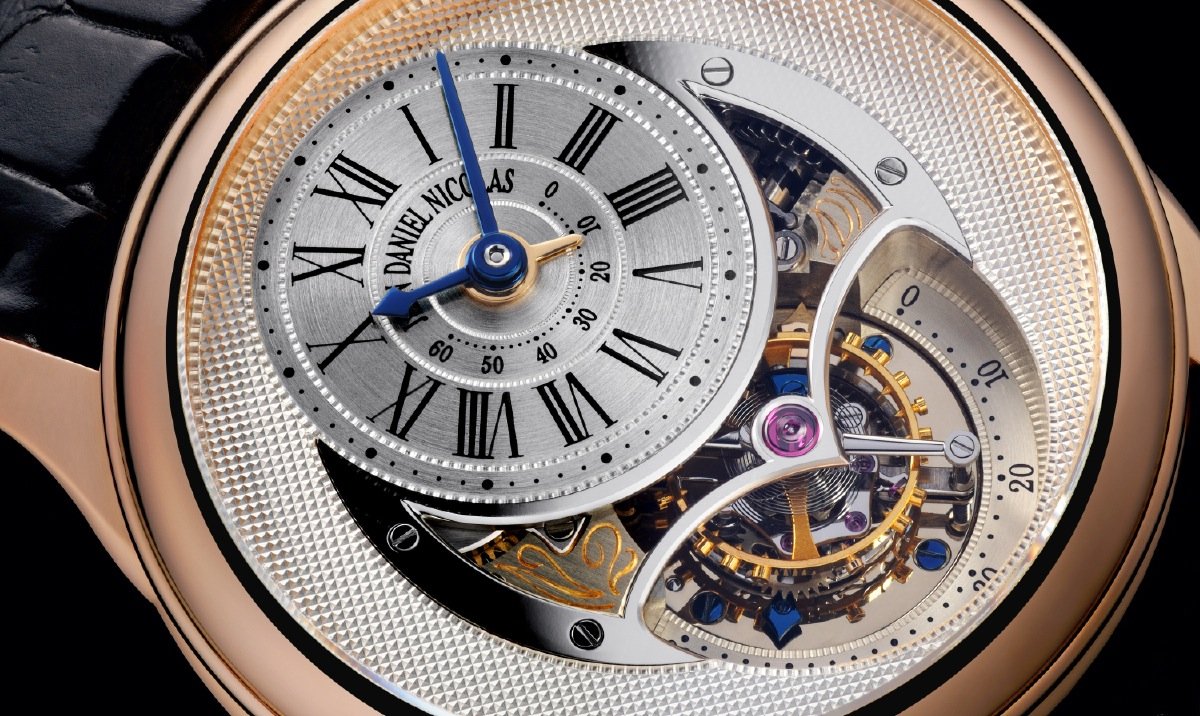
Paradoxical prosperity
Lastly, for all, or nearly all, the pandemic has paradoxically been (and still is) a period of prosperity. The independents are in demand – and this demand was boosted during the lock- downs by social media and their multiplying effect. Ludovic Ballouard, for example, says it outright: “I’ve never worked so hard. To the point that I’m scared the coronavirus is going to stop... I’m scared I won’t be able to keep pace, there’s more and more demand. It’s as if all the retailers wanted to create their ‘independents’ corner at the same time.”
True, these master watchmakers cater to a very limited customer base of cultivated connoisseurs and well-informed, wealthy collectors. But one value prevails and also explains their attractiveness: their authenticity, unique to each. Applied to them that word, authenticity, so often used and abused in watch marketing, has real meaning. Authentic they are in terms of their passion, their daily, manual labour – all at the workbench – their lifestyle, their story. And this authenticity is fulfilled in the beauty of the watches they produce. Which sell like hot cakes.

Kari Voutilainen at the pinnacle
t certainly is a long way from the school benches where a bored young Kari Voutilainen dreamed of “being independent, and just doing something with my hands.” At the age of 22 he entered the Tapiola watchmaking school on the outskirts of Helsinki. It was a revelation. “For the first time in my life, I was happy to go to class.”
He let us in on his backstory back in 2006, when we visited him in his tiny workshop in Môtiers, just down the road from his new headquarters. The village is famous for welcoming the exiled philosopher Jean-Jacques Rousseau, before the villagers hounded him out in a barrage of stones. Just a stone’s throw (!) from Rousseau’s erstwhile home, Kari Voutilainen welcomed us inside his one-man manufacture which, at the time, basically comprised a very large, very heavy table onto which were bolted all his machines and tools, and where he made virtually everything himself.
Back in 2006, Kari Voutilainen welcomed us inside his “one-man manufacture” which, at the time, basically comprised a very large, very heavy table onto which were bolted all his machines and tools.
-

- Kari Voutilainen in the winter of 2021
Basel 2005: a sensation
The previous year, in 2005, the man who had struck out on his own in 2002 caused a sensation in Basel after introducing his first watch at the AHCI booth. It was a unique minute repeater that struck the hours and minutes and, rather than the usual quarters, the tenths of an hour. “It’s a lot easier on the ear,” he explained to us, “because we’re used to the decimal system.”
He achieved this feat by completely reengineering an old movement blank, redesigning the calibre, adding an exceptional manual finish and developing a rare purity and clarity of tone thanks to a case worked entirely by hand from a thin sheet of gold by his friend Gideon Levingston.
“The shape was created manually by gradually tensioning the metal, which turns the case into a genuine resonance chamber. The industrial method, starting out with a gold ingot, severs the nerves of the material,” he confirmed.
-

- Kari Voutilainen set up shop in the former “Chapeau de Napoléon” hotel-restaurant overlooking the Val-de-Travers on 1 June 2021.
The keys to the kingdom
But this “overnight success” was a long time in the making. It was the carefully orchestrated end point of a long journey that took Kari Voutilainen from school, via a restoration apprenticeship, to Wostep, the famous Swiss elite watchmaking college where he took additional courses on complications. He then returned to Finland, where he set himself up as an independent watchmaker, did a lot of restoration, and “learned to be organised”. But one meeting would change his destiny. Michel Parmigiani, who at that point spent most of his time restoring the very fine pieces in the Sandoz collection, asked Kari to come and work for him.
One meeting would change his destiny. Michel Parmigiani, who at that point spent most of his time restoring the very fine pieces in the Sandoz collection, asked Kari to come and work for him.
There, in Fleurier, the fairytale began. “Just think, I was able to restore eleven exceptional tourbillons that were designed as entries for the Concours d’Observatoire. What an incredible experience for a young watchmaker.”
-

- The new 28SC wristwatch perfectly encapsulates the philosophy of Kari Voutilainen. The two-tone dial is made from silver and engine-turned by hand. Hour numerals are made from gold and their finish can be personalised. Limited edition of 12 watches.
But perhaps most importantly, he would meet the man who would become his mentor: Charles Meylan, who had completed watchmaking school in the 30s and who, on his retirement, became the first watchmaker to work in Michel Parmigiani’s workshop. “He opened all the doors for me, entrusted me with all his secrets and passed on a vast amount of knowledge, so that eventually I felt completely comfortable with the most complicated watches, and was able to easily make all the parts, the wheels and springs, working with the most traditional tools.”
For around ten years he continued to work for Michel Parmigiani, who was beginning to create his own watches and launch his own brand. In 1999 the Wostep asked its alumnus to return to school – this time to teach students about watch complications. That’s what he did up to 2002, when he decided he was finally ready to create his own brand. At last, his long-held dream was a reality: he was an independent watchmaker.
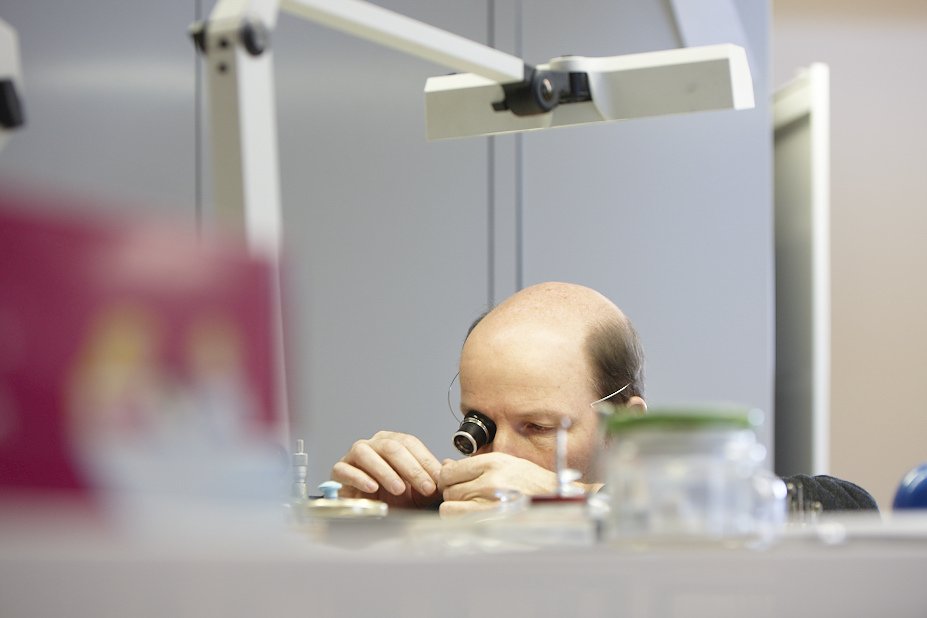
A totally independent manufacture
Standing on the vertiginous balcony of the many-windowed Chapeau de Napoléon – a light and airy former hotel-restaurant – looking out over the vast, bucolic landscape, Kari Voutilainen, a shy, affable and unfailingly kind man, wears the gentle smile that comes so readily to him. He’d be forgiven for flexing, but that’s not his style at all. The reason he set himself up in this lofty eyrie is not to crassly ram home his exalted status, but to grow closer to his own watchmaking ethos and to change the dynamic, by bringing all his main activities together in one magical place.
Now, after almost twenty years as an independent, Kari Voutilainen has become one of the most revered names in contemporary fine watchmaking. He’s no longer a one-man manufacture, and hasn’t been for some time. He now has 26 employees, and for seven years has been joint owner of Comblémine SA which, with its 13 staff, creates and produces all his dials. He and his team made 64 watches last year.
-

- The 28SC’s elegant and strong movement is designed, built, fabricated, finished and assembled entirely in the Voutilainen workshops.
Kari Voutilainen produces virtually everything in-house (everything except for the jewels, barrel springs, Moser spirals and sapphire components). The firm designs, builds and manufactures all the movement parts, escapements, baseplates, bridges, wheels, pinions and pins (16,000 components were machined last year). They meticulously decorate the parts, assemble, regulate and check the movements, issue communications and conclude sales. It is a totally independent, complete manufacture.
Standing on the vertiginous balcony of the many-windowed Chapeau de Napoléon looking out over the vast, bucolic landscape, Kari Voutilainen, a shy, affable and unfailingly kind man, wears the gentle smile that comes so readily to him.
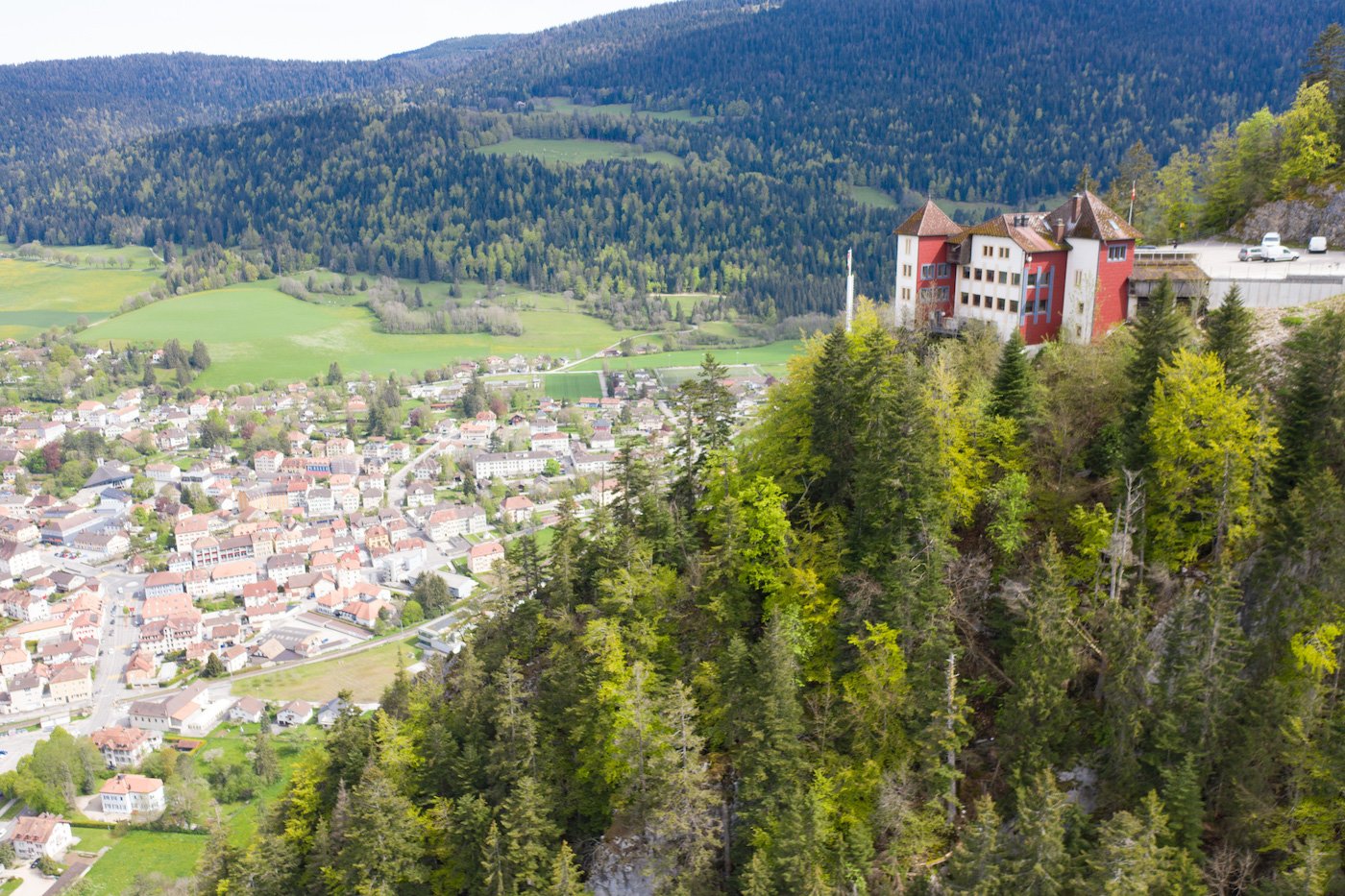
“A lot of effort, but you can’t put a price on freedom”
“When you do everything yourself, it’s a lot of effort,” Kari points out. “We also take on the labour risk, which other companies outsource to their suppliers. But it offers huge advantages: in terms of quality and consistency, the eternal issue of supply lead times, and steady production output. We work locally, in direct and continuous communication with everyone involved. That’s how we maintain our freedom. And you can’t put a price on that.”
He gives an example: “When we make a component, the technicians immediately go and talk to everyone who’s involved. Can it be decorated appropriately, is it easy to mount, how will it be cleaned, catalogued, stored?”
In the end, thanks to this internal coherence and easy communication, the 360° control, the freedom of initiative granted to everyone – and the fact that Voutilainen produces its own escapements – “thanks to this way of working with a team of deeply motivated people, we very rarely have any after-sales service problems,” Kari confirms.
-

- One of Japan’s greatest lacquer artists, Tatsuo Kitamura creates lacquer art works at the pinnacle of this Japanese tradition. The dial of the new Green Garden one-off watch shown here, made with the saiei makie and somata zaiku lacquering techniques, takes several months of work to complete.
“I’d rather slow down than speed up”
The idea of physically relocating to the top of a mountain was not taken in order to increase output, or to speed up production. Quite the opposite: the point was to be able to breathe more deeply. As Kari points out, at this stage it’s better to “slow down rather than speed up.” Acceleration might seem to be a tempting option, given that demand, perhaps spurred on by the pandemic, has increased. But that demand also has a different complexion.
“Retailers are buying far less, individuals are buying far more,” the watchmaker explains, noting that 2020 was his “best year as an independent,” with an output of 64 watches. Requests are multiplying, websites are springing up or consolidating around the search for fine – and exclusive – watches. “I just had to turn everyone down, for the simple reason that I had no more watches.” Voutilainen’s order book is completely full for 2021 and 2022, and 2023 is rapidly filling up.
“It’s better for us to slow down, because we’ve made some new calibres, and we need to see how they perform over time. And we must be very careful not to do too much. We also create many one-off pieces and extremely limited series. Furthermore, and this is important, we don’t have a sales department. I’m my own salesman. I deal with clients directly, right up to delivery. I even prepare the invoices!” he laughs.
“We don’t have a sales department. I’m my own salesman. I deal with clients directly, right up to delivery. I even prepare the invoices!”
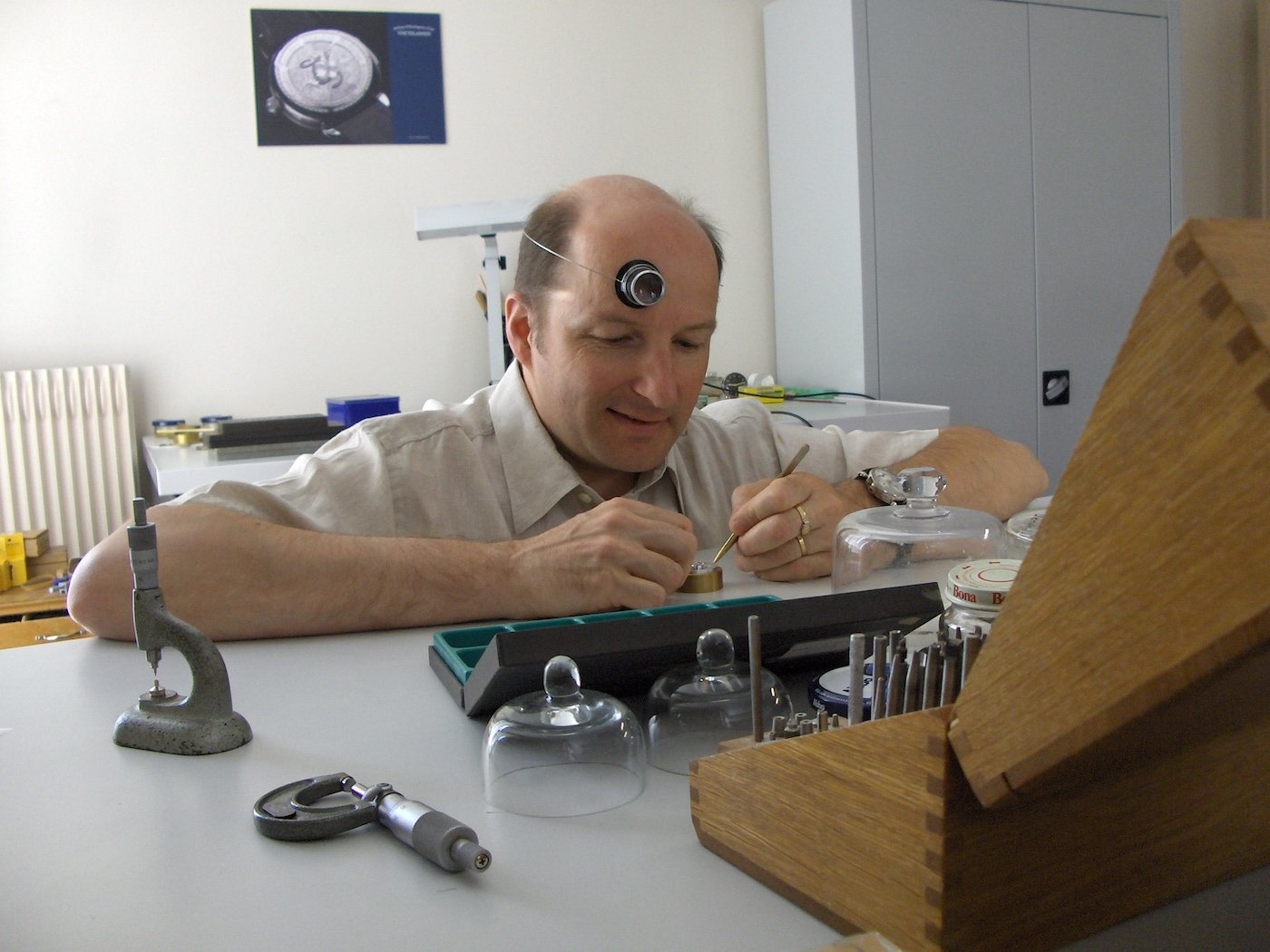
What David can teach Goliath
Despite his reserved exterior, Kari Voutilainen likes to sell his watches in person because he loves meeting people, “people who come from so many different horizons. What’s my secret? I never push people to buy. At exhibitions I’m often on my own. People are sometimes surprised that I meet them in person. Who are my clients? Extremely cultivated and highly discreet people for the most part, who don’t need a watch to show off. My watches are for connoisseurs.”
Around five years ago, well before the pandemic, “everything changed. Astonishingly, more and more young people started developing an interest in real watchmaking. I receive many requests and inquiries from people under 30. That’s very good news. Thanks to the internet, and the direct communication it fosters, our clients follow us every step of the way as we create their watches, and that increases their trust.”
In his eyes, because of the increasingly targeted watchmaking education being dispensed by publications, websites, forums, blogs and other channels, the public now “understand the fundamental difference between industrial and artisanal. People who ‘get it’ seek out the independents.”
“Retailers are buying far less, individuals are buying far more. Astonishingly, more and more young people started developing an interest in real watchmaking. I receive many requests and inquiries from people under 30. That’s very good news.”
-

- A view of the Green Garden one-off watch’s movement
“Everything begins with training”
This is no coincidence, because for Kari Voutilainen, and independent watchmakers more broadly, “everything begins with training. Without training and knowledge transfer we’d have nothing,” notes the man who trained many young watchmakers in the art of complications when he taught at Wostep. “But the big firms no longer need exceptional people. You just have to be qualified and certified. Nevertheless, in order to pass on true expertise, those little secrets that are the essence of this profession, we need schools. And they have been neglected.”
Kari Voutilainen offers the example of the Le Locle watchmaking school. “The school produced a film about its training programmes, but the government wouldn’t allow it to be shown. Why not? Because, on the one hand, the government is pushing apprenticeships in order to save money, and on the other, the industry is in a race to the bottom. They no longer need fully-trained watchmakers; they need operators. And while that’s enough to ensure the machines continue to run, it’s not enough to ensure that the high standards of watchmaking endure. As things stand today, the watch industry could produce the same kinds of watches anywhere in the world.”
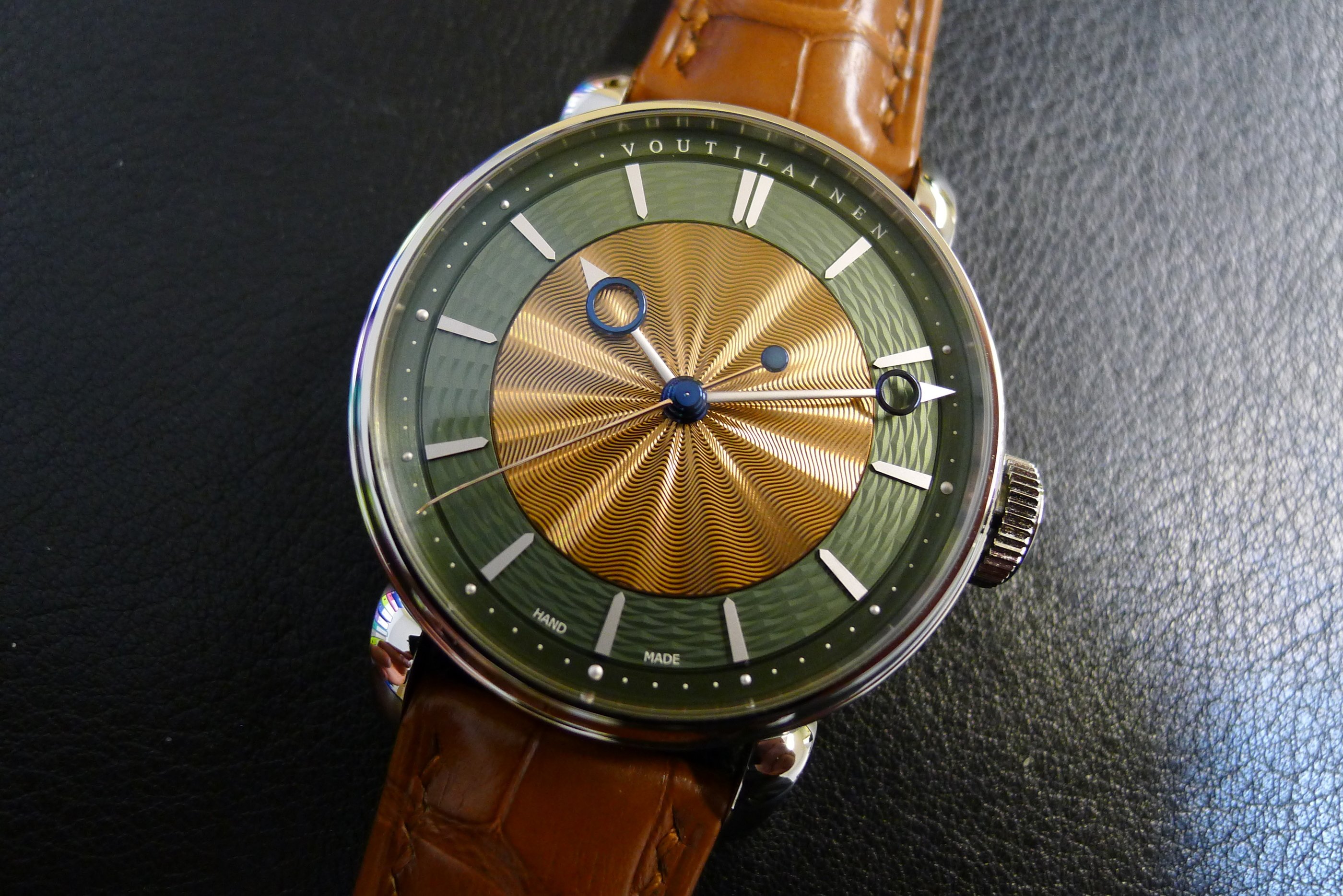
The steel of the future
His words might seem harsh, but Kari Voutilainen practises what he preaches. The transmission of traditional knowledge and practices developed over centuries is vital – not to reproduce the past, but to nourish the present. Before the invention of ‘R&D departments’ that were separate from the workshop, practical and intuitive research had always been at the heart of every development in watchmaking. That was what the future of the industry was built on.
-

- One of the main innovations of the new the Voutilainen 28SC-SB lies in the material used for the case: AISI 316L grade 4441 steel. This solar-forged steel is 100% recycled and recyclable, which reduces its carbon footprint considerably. It is sustainable, ethical, clean and ecological. The highly uniform steel is of superlative quality, and gains a remarkable appearance after polishing.
Kari Voutilainen’s latest limited series, the Voutilainen 28SC-SB, provides a perfect illustration. The steel of its case is 100% recycled and recyclable, produced in a solar-powered forge. This steel not only has a considerably reduced carbon footprint, it’s also extremely uniform, very high quality, capable of taking a “remarkable” polished finish, sustainable and ethical. In the view of Kari Voutilainen and Raphaël Broye, the entrepreneur behind Panatere, a company that specialises in recycling and in solar-powered forges (read our interview), “this steel represents a revolution in the raw materials market. It’s quite simply the steel of the future.”
To kick things off, the very first bar produced was reserved for the manufacture of the first twelve AISI 316L grade 4441 steel cases for the Voutilainen 28SC-SB series. It’s a fitting way to celebrate 20 years of independence. In the future, small series and one-off pieces will be made from this revolutionary steel.
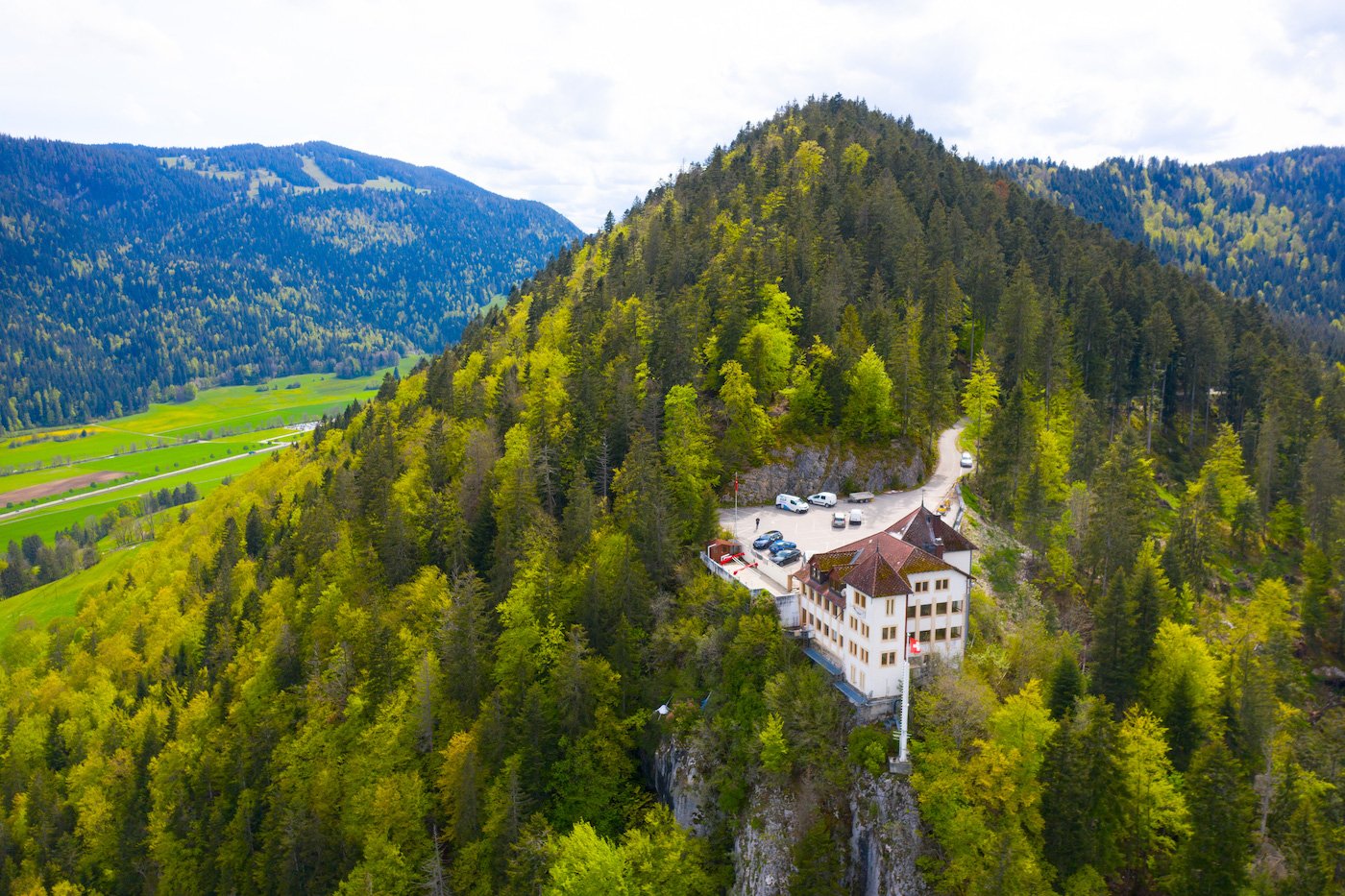
Elegance in word and deed
In everything he does, Kari Voutilainen quietly steers a course towards what is the most honest, the most precise, the most meticulous and the most elegant. That goes double for watchmaking. The Vingt-8 movement that drives this series is equipped with a two-wheel escapement with an external Phillips overcoil and an internal Grossmann curve, which supply a direct impulse to the balance, offering benefits in terms of efficiency, energy, longevity and stability.
This technical efficiency is complemented by high-end finishes that the experts will delight in examining, loupe screwed firmly into eye socket: perfectly level pinion and wheel surfaces polished to extremely strict tolerances, hand-finished baseplate and bridges, and all steel surfaces and screws finished and polished by hand.
-

- The raw materials used for the dial of the Green Garden watch are: kinpun (gold powder), jyunkin-itakane (gold leaf), yakou-gai (green sea snail shell) and awabi-gai (abalone shell from New Zealand).
However, Kari Voutilainen has also been recognised for many years now for the beauty and elegance of his dials with their subtle guilloché motifs and harmonious colours. A picture is worth a thousand words – just marvel at the exemplary poetic subtlety of the unique dial of the Green Garden, which has the simple elegance of a haiku. A haiku from Finland.
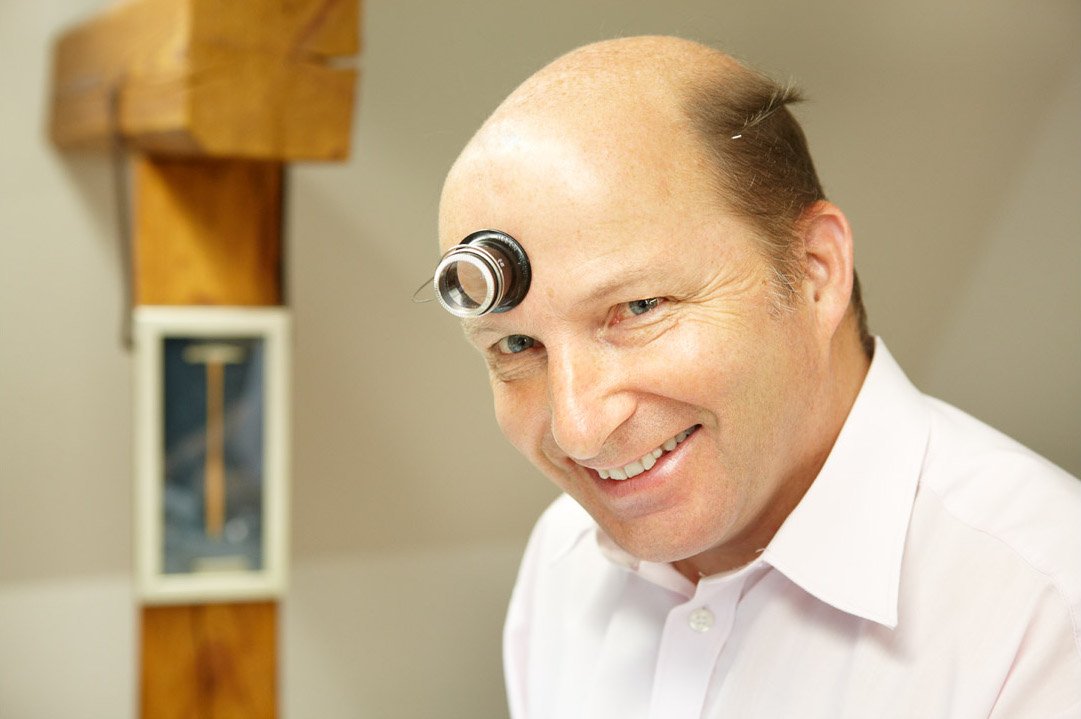
THE EIGHT GRAND PRIX D’HORLOGERIE DE GENÈVE (GPHG) AWARDS WON BY KARI VOUTILAINEN
-

- Observatoire - 2007 Men’s Watch Prize
-

- V-8R power reserve - 2013 Men’s Watch Prize
-

- Hisui - 2014 Artistic Crafts Watch Prize
-

- GMR - 2015 Men’s Watch Prize
-

- Aki No Kure - 2017 Artistic Crafts Watch Prize
-

- 28ti - 2019 Men’s Watch Prize
-

- Starry Night Vine - 2019 Artistic Crafts Watch Prize
-

- 28SC - 2020 Men’s Watch Prize

Daniel Roth: the rough road of a pioneer
n the top floor of Daniel Roth’s house on the shores of the Lac de Joux, the watchmaker works in his small workshop, assisted by his wife and son. The three of them (him, his wife Nicole and son Jean-Daniel) produce three watches a year. Watches that are snapped up no sooner than hatched. Precious rarities.
Because you have to remember that the hand that shapes them lived through a whole chapter of the grand renaissance of mechanical watchmaking, of which Daniel Roth was one of the premonitory artisans.
Daniel was born in Nice, on the shores of the Mediterranean, in 1945. But his family came from the Jura, from La Chaux-de-Fonds, starting with his grandfather, a Voumard, who escaped to the USA and lived with the Mennonites. The whole family was imbued with Protestantism and his father, a seller of bibles who had attended the Geneva Bible School, eventually opened a shop called L’Horloger Suisse (The Swiss Watchmaker) in Nice, where he sold watches and bibles side by side.
The whole family was imbued with Protestantism and his father eventually opened a shop in Nice where he sold watches and bibles side by side.
Young Daniel’s fascination for mechanics developed at an early age. As a child at his aunt’s house in Lyon, he was spellbound by the sight of the steam locomotives that he saw passing just a few metres from the bottom of a little garden that offered a direct view of the tracks. One day, by way of greeting, a train driver reared up his monstrous mechanical machine in front of the astounded little boy.
As a child he was skilful with his hands, very manual. His parents enrolled him at the Nice School of Watchmaking, and he loved it. Watchmaking had him in its spell. What about religion, we ask him? “I’m a believer, but I don’t live with God. Because it’s not easy,” he replies with a gently ironic air.
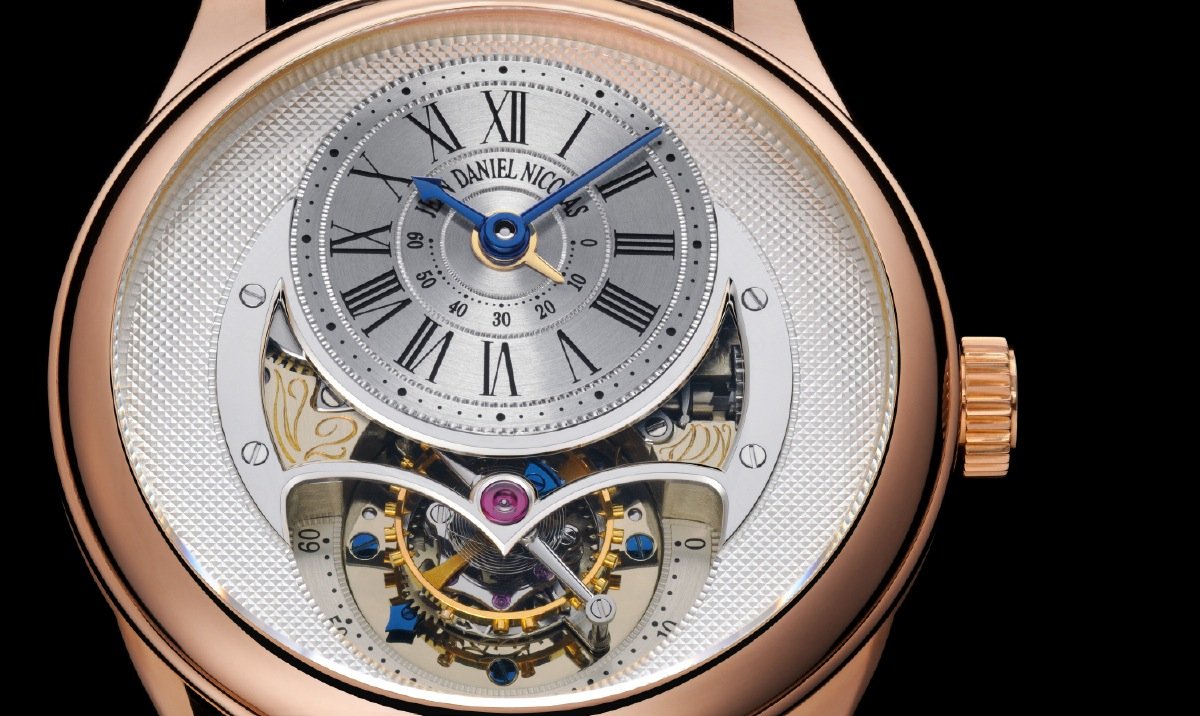
A return to tradition
It is true that, in the course of his career, he has had to struggle against the odds. His military service behind him, he returned to Nice only to find that the bible and watch shop, which he had intended to take over, had been sold.
There was only one path left open to him: the one to Switzerland. Because he had always known that “the most beautiful watches are found in the Joux Valley”. There, he was hired by Audemars Piguet and stayed for seven years. At that time, the factory employed no more than around twenty watchmakers. He learned pivoting and adjustment and worked on the extra-thin models and complications. It was like university after school.
He was hired by Audemars Piguet and stayed for seven years. At that time, the factory employed no more than around twenty watchmakers. It was like university after school.
The early 1980s saw the start of the venture with Breguet that the Chaumet brothers – Parisian jewellers – aimed to relaunch. In the Joux Valley, they heard about the watchmaker from Nice and called him up. Daniel Roth set to work on his own. After three years, there emerged a watch intended to symbolise the rebirth of the famous name and cement the brand style.
The Breguet venture grew, collections were produced and the company reclaimed its place at the high end of the watch market. But in 1989, Daniel Roth took his “great decision”: independence.
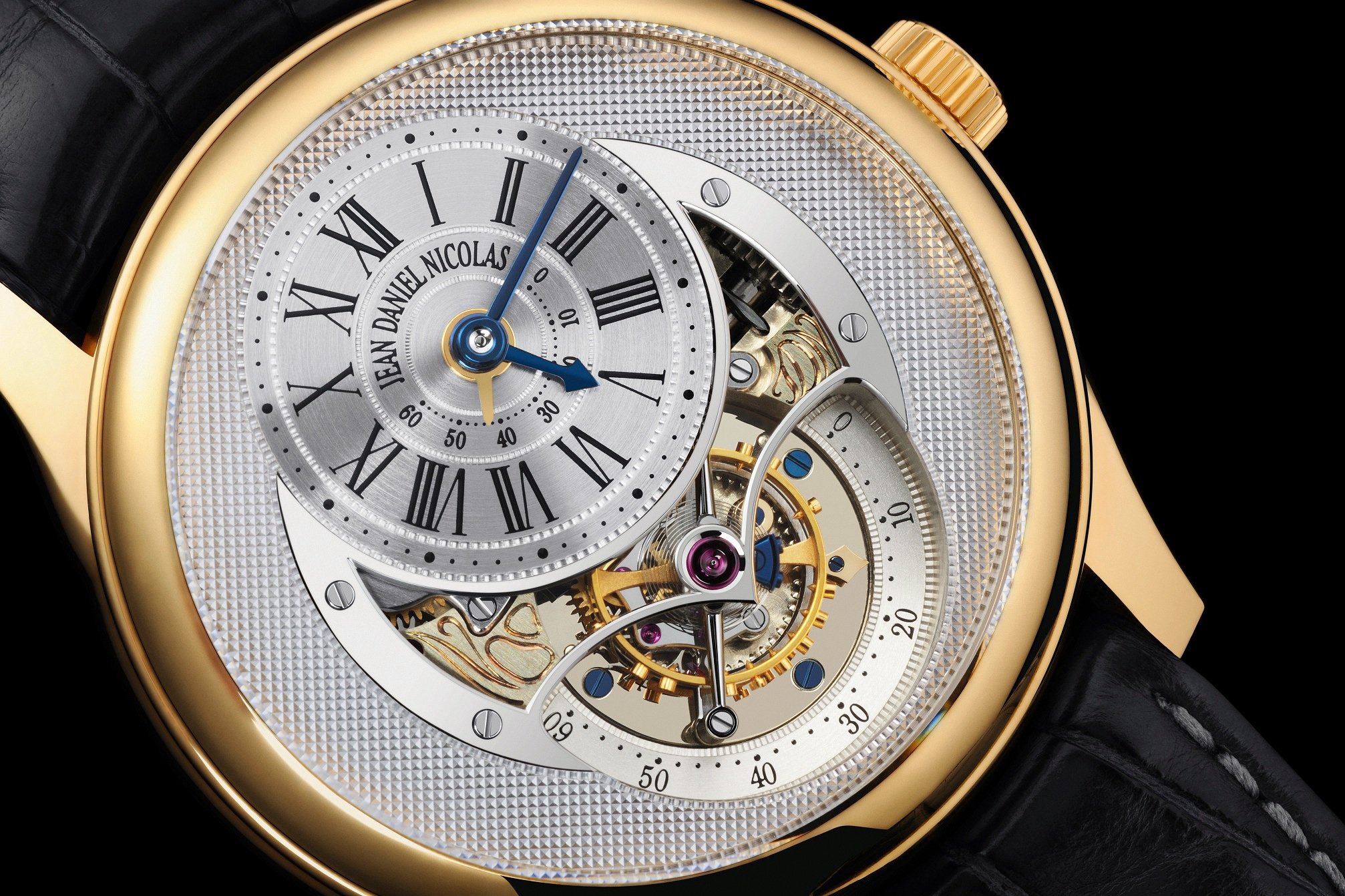
Independence
Alone at his workbench, he designed and built a tourbillon for a wristwatch, COSC-certified and in a category of its own. This was no mean feat at a time when tourbillons were still a real rarity. In addition to his talent for watchmaking he had genuine aesthetic skill, not only in his superlative finishing work, but also in the very elegant design of the case, which would become his unmistakable trademark.
From there, he went on to develop a series of collections, tourbillons, chronographs, skeleton chronographs and ladies’ watches. Daniel Roth was the sensation of the haute horlogerie revival.
He went on to develop a series of collections, tourbillons, chronographs, skeleton chronographs and ladies’ watches. Daniel Roth was the sensation of the haute horlogerie revival.
-

- The work of Daniel Roth as featured in Europa Star in 1992
We will not go back over the details of the commercial misadventures that ensued. A skilled watchmaker, Daniel Roth apparently does not have the same sure instincts when choosing his partners. Having worked through Sieber Hegner, a large Zurich-based merchant, then Dr Tay, only to be taken over (“I didn’t sell, they took me”, he says) at the same time as Genta was taken over by Bulgari, Daniel Roth lost his own name.
His story is equally emblematic of the dangers that lurk along the path to independence, which is anything but paved with roses. And the question of “critical mass” is even more crucial than for high-volume companies. It takes time to find a balance. And once you have found it, you have to keep it. And be wary of the predators that prowl.
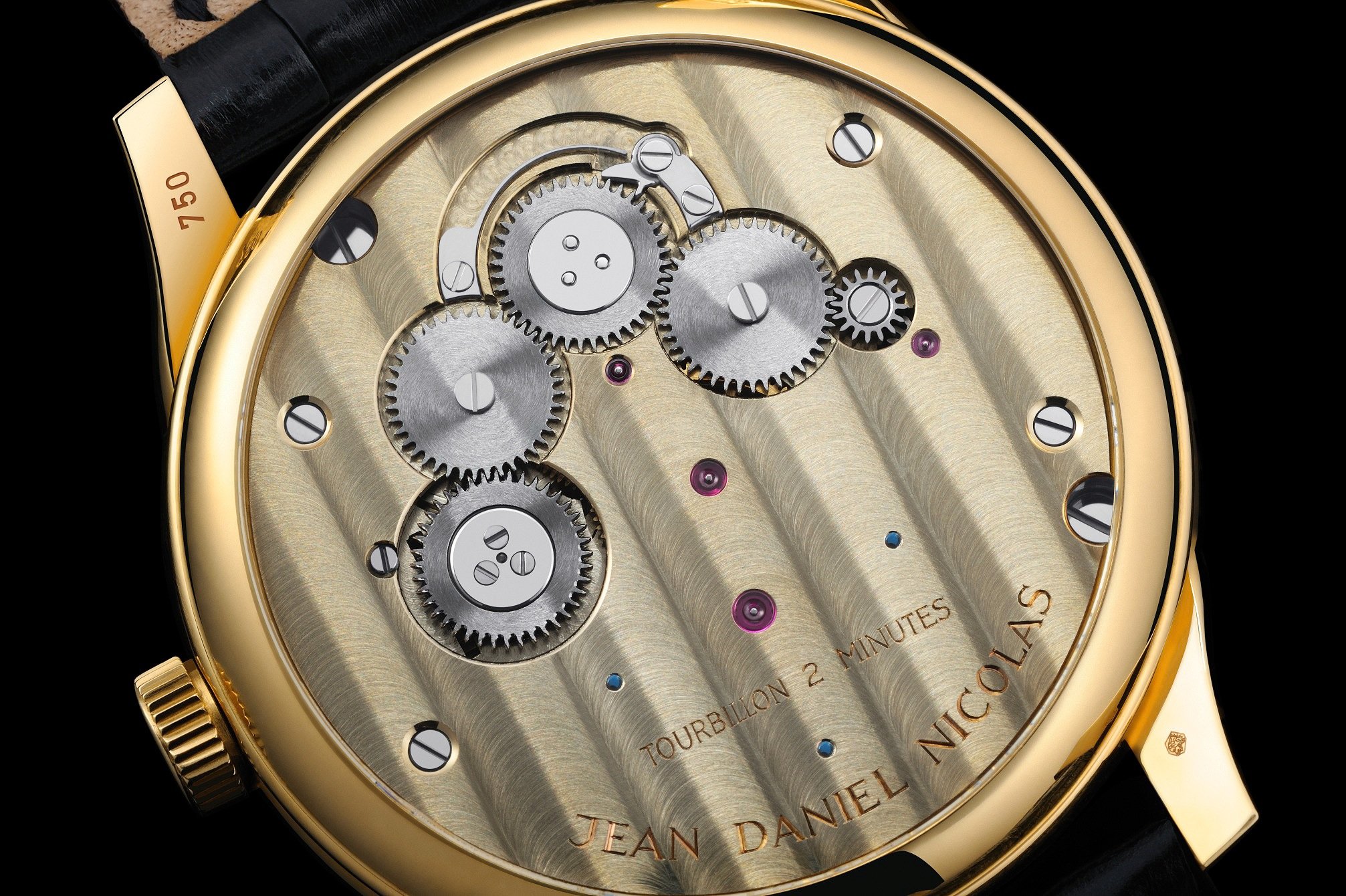
A lesson in tenacity
Despite all this, 25 years ago Daniel Roth started out as an independent watchmaker all over again. He honed his two-minute tourbillon, an absolute rarity (“but since it turns more slowly, it lasts longer,” he says, tongue-in-cheek). He designed a new case for it, unlike any other – “a violin”, immediately recognisable. With grit and determination he attains a degree of finish “beyond which it is impossible to go” and succeeds in completing two or three a year.
-

- Daniel Roth at his working bench
- ©Fred Merz/Lundi13
This 77-year-old watchmaker currently has at least six on his order books – enough to keep him going. His watches are among the best-kept secrets in watchmaking and obtaining one is seen as an extremely rare privilege.
His watches are among the best-kept secrets in watchmaking and obtaining one is seen as an extremely rare privilege.
-

- Jean Daniel Nicolas Two-Minute Tourbillon. Hour hand, minute hand, seconds indicated by the tourbillon. Power reserve of more than 60 hours shown by an indicator hand.

Denis Flageollet: Materials, it all starts with the materials
f you want to see Denis Flageollet, just ask! Chances are that you’ll meet him behind the former Sainte-Croix village bistrot converted into an all-purpose space in the little craft forge he built for himself. Over a roaring fire he works an ancient and gigantic pair of bellows made of wood and leather, with which he forges his metals. He has only one subject of conversation: materials.
Over to him: “Trying, testing, tinkering, that’s manual work. I feel bad if I don’t work with my hands for three days. I have multiple projects, but what they all have in common is the desire to understand how the material reacts. I work on methods, processes. I’ve discovered that you work metal like wood, metal is fibres.” He shows us a hammer and an axe he has forged. A knife, the wooden handle of which was made in his carpentry workshop just next door. You can see the lines, the strength, the structure of the forged, folded, beaten material. You perceive the essence of the material. Steel is like a mille-feuille, to be taken and worked in one direction then in the other, folded and refolded.
Ever since childhood Denis has been inspired by a passion for materials. How will a material react when placed under strain? What are we going to able to do with it? At the moment, he is forging bells and gongs, testing them, breaking them. “It’s exciting. You see the limits of the material, you understand how to get to grips with it, and depending on the method the result will be totally different. Just like with stone, you can’t approach it any old how. Same for glass, with its reputation for brittleness. Every material has a direction of formation, crystallisation, an interplay of balances, forces and rigidity.”
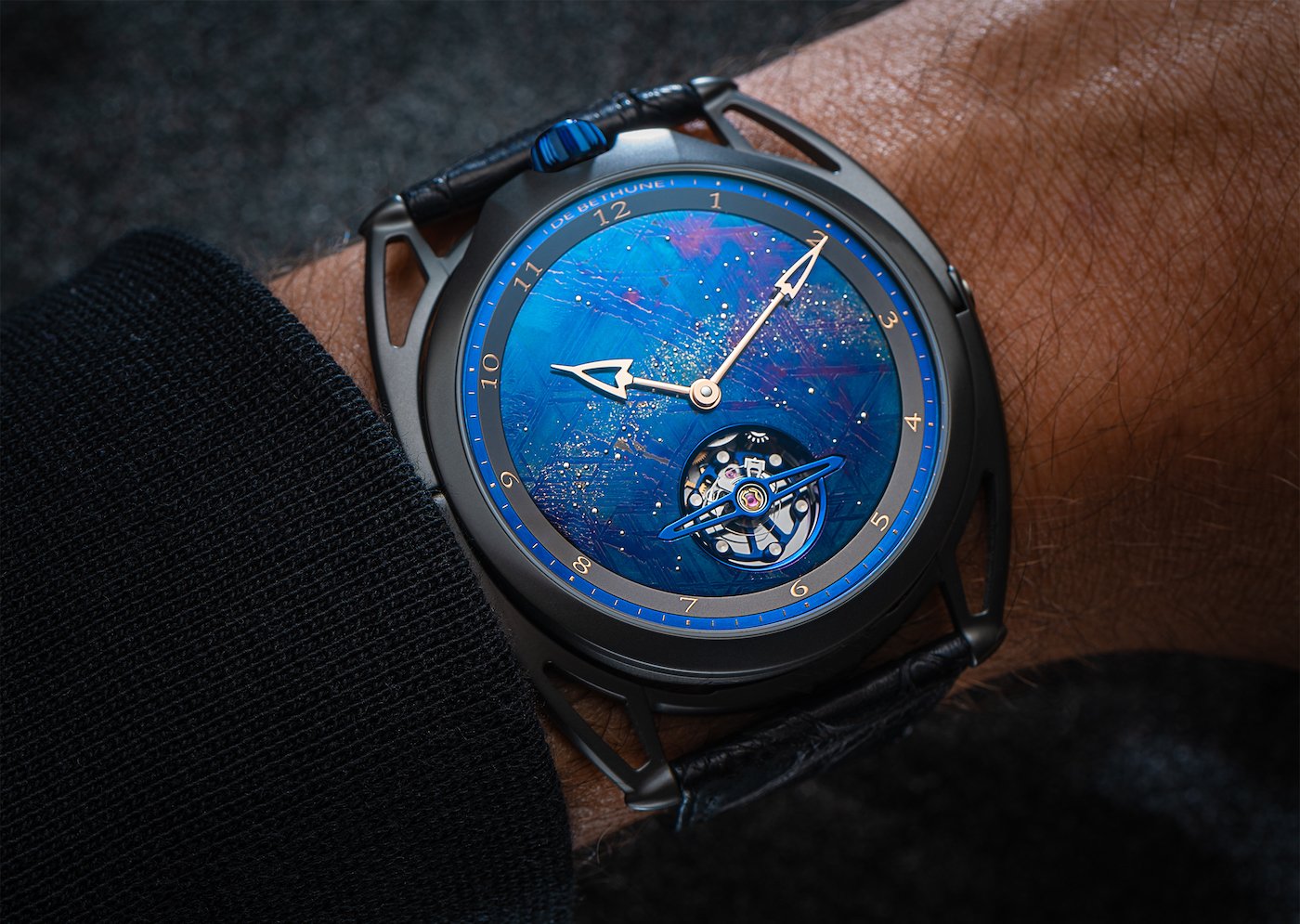
Three-dimensional vision
Denis has one feature peculiar to him: three-dimensional mental vision. He confesses this with some reluctance, perhaps for fear of not being taken seriously, but he has the gift of a mechanical mental vision that allows him to design and understand how things work. He sees every detail of cogwheels and their motion. He senses everything, right down to the bounce in instantaneous jumping mechanisms. Similarly, with raw materials he has, he believes, a mental vision and understanding of their texture and form.
-

- Iron ore
Although he acquired this visual understanding of wheels and cogs while still a child, the same ability to visualise material came later, and gradually. “But melting alloys, understanding the temperatures – that you can control things much more precisely with your eyes, using manual bellows, than with an electric blower – and thereby knowing how to create differences within the material itself is the same thing, when it comes down to it, as being able to grasp mentally the interaction of forces within a movement.” Denis says that when he goes through the workshops, he can tell simply by the sound of the grinding wheel on the material whether or not the part will be good or not. After a certain point, it becomes inexplicable. Scientists also find this sometimes in their research.
-

- Not far from his manufacture, Denis Flageollet pursues his research in this house, the former bistrot of the village of La Chaux.
But what has this got to do with watchmaking? Everything. Because everything starts with the material. Is not bluing, which he has made his hallmark, a subtle interplay of flames and material?
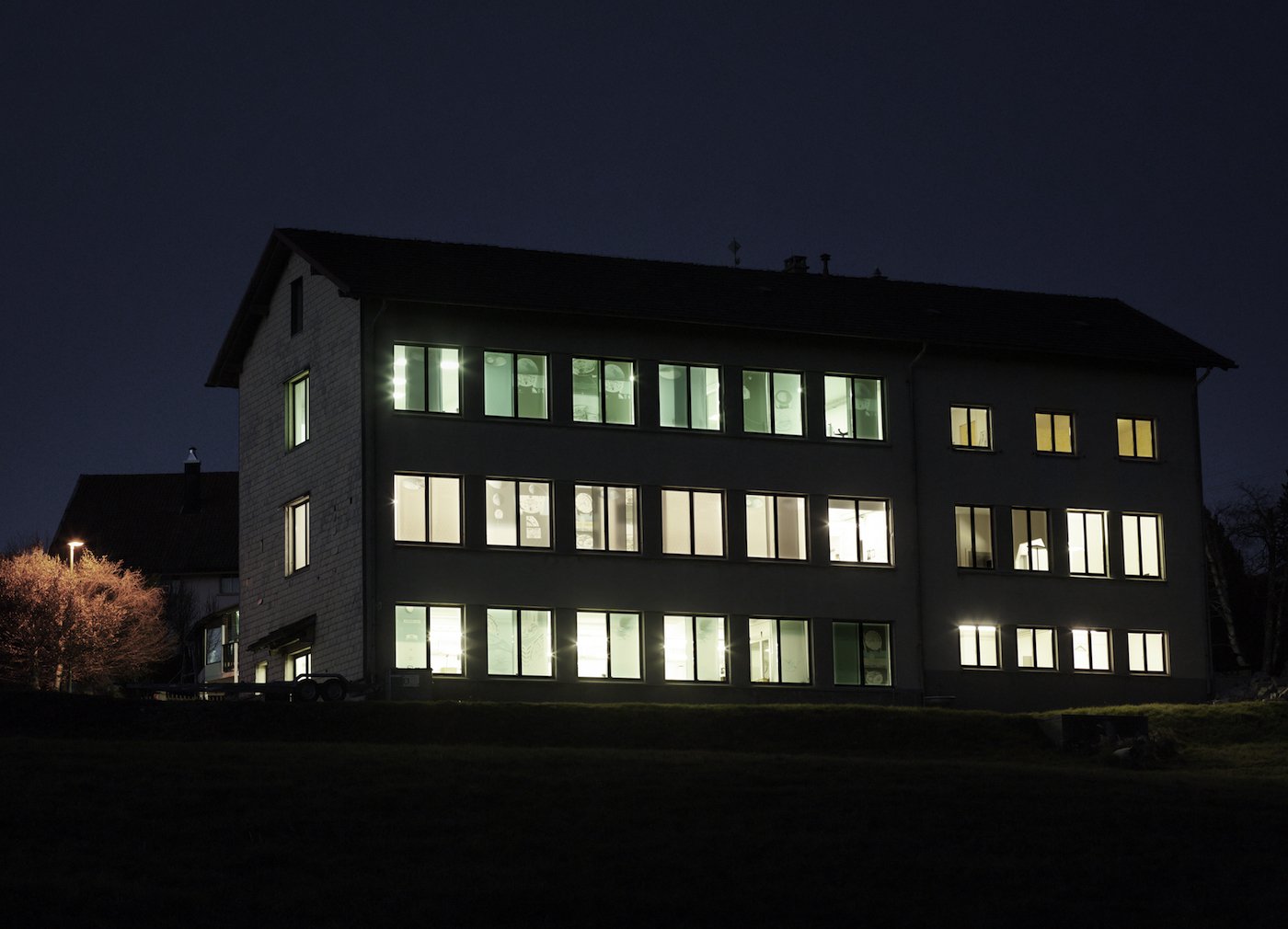
Predestination?
The son, grandson and great-grandson of French watchmakers, after completing secondary school with a focus on the sciences, Denis Flageollet left for Switzerland to train as a watchmaker and micro-mechanic. He then rounded off his training with a stint as a watchmaking technician for antique watches at the Le Locle horology museum. In 1989, with François-Paul Journe, he co-founded the company THA, specialising initially in restoration. For Breguet, they created the first Sympathique clock with its associated wristwatch. During those twelve years spent developing THA, he set up the watch mechanics and production workshops, took over the technical management and was responsible for the design office.
-

- The DB28XP Meteorite. Black zirconium case, meteorite dial with unusual geometrical forms (octahedrites), blued, and studded with a multitude of tiny white gold pins. Hand-wound movement with a De Bethune-patented balance wheel. Ten numbered pieces.
On the strength of this experience and this immersion in history, with David Zanetta – an Italian entrepreneur and a great aesthete with a solid classical culture – he co-founded De Bethune in 2002. Their inspiration was nourished by several centuries of horological history, combined with a pronounced taste for contemporary design. What at first seemed an unlikely team – the sophisticated Italian and the “materialist” now firmly established in Sainte-Croix – was to give rise to one of the finest modern-day ventures in terms of style and watchmaking skill.
Their method, peculiar to them, was gradually honed. They developed their watches by actual material means, through successive prototyping, both of the exterior and the movement, by Denis Flageollet. Here again, we can see what he means by the primacy of the material.
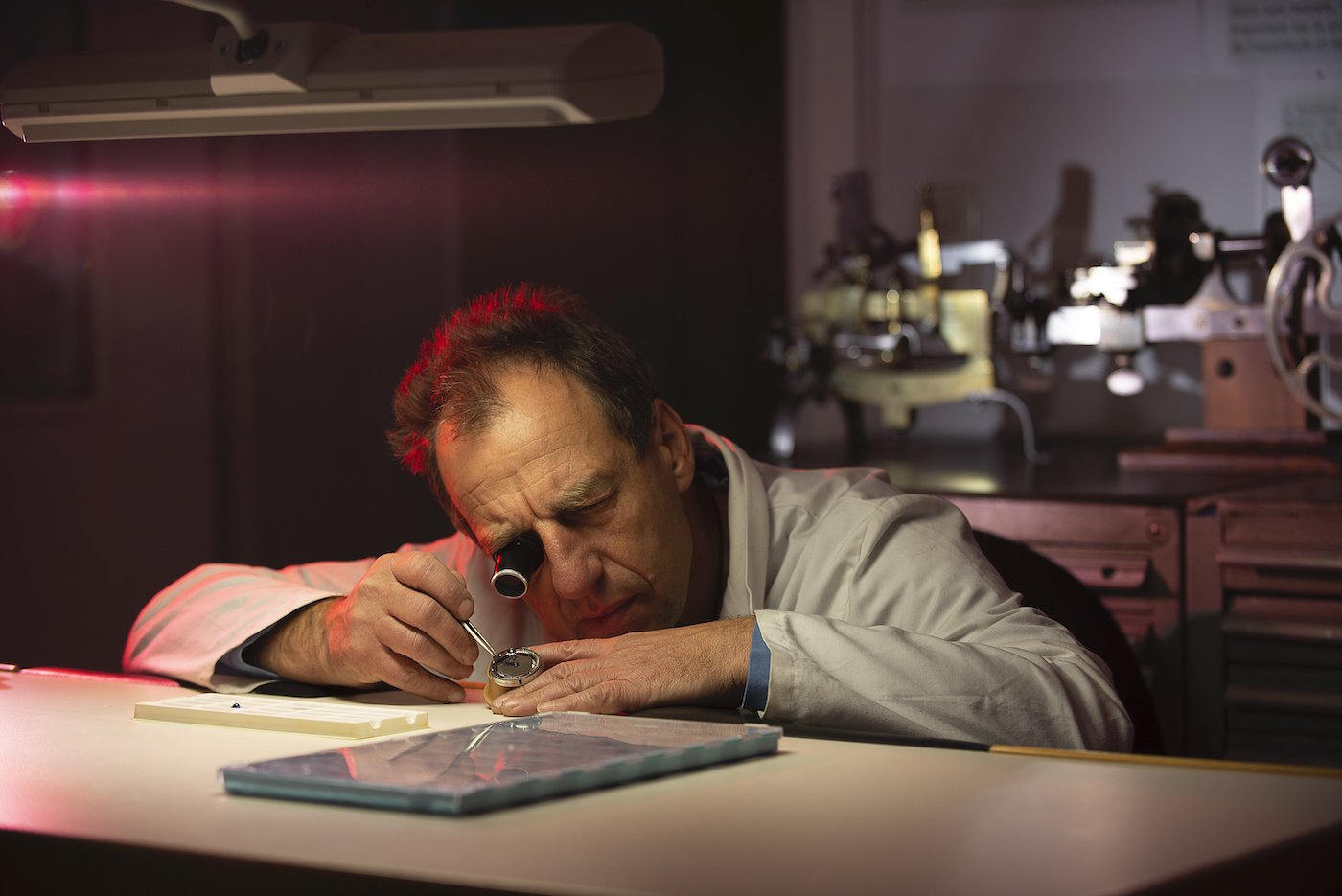
Transmission
“At the beginning, with David and his incredible aesthetic taste, the De Bethune project unfolded quite naturally, strangely but intuitively. To the point that today, it’s as if there’d been a handbook defining what De Bethune is, a kind of self-evidence, second nature, nothing to do with marketing decisions. But we made the mistake of presenting the watch without any explanation, as if it was self-evident. Yet it was anything but. It was the result of a long voyage; it was the expression of aesthetic and technical choices that were contemporary, but in reality had their roots in grand, classic horology. Gradually, I realised that there was a need to explain the creation, the motivation and experience behind it, how it had been built, how it developed in a certain direction.”
Today, this desire to share has found concrete expression in the creation of a year-long course in art mechanics together with his fellow artisans of Sainte-Croix, especially the mechanical engineer-cum-poet François Junod, an automaton expert, and automaton builder and watchmaker Nicolas Court, which he runs simultaneously with his 100% investment in De Bethune. For him, passing on his experience to watch lovers and young generations of watchmakers goes without saying.
-

- Transmission is a key concern for Denis Flageollet.
It is in the same spirit that he also works with ECAL, an important school of art and design in French-speaking Switzerland, and the École Polytechnique de Lausanne (EPFL).
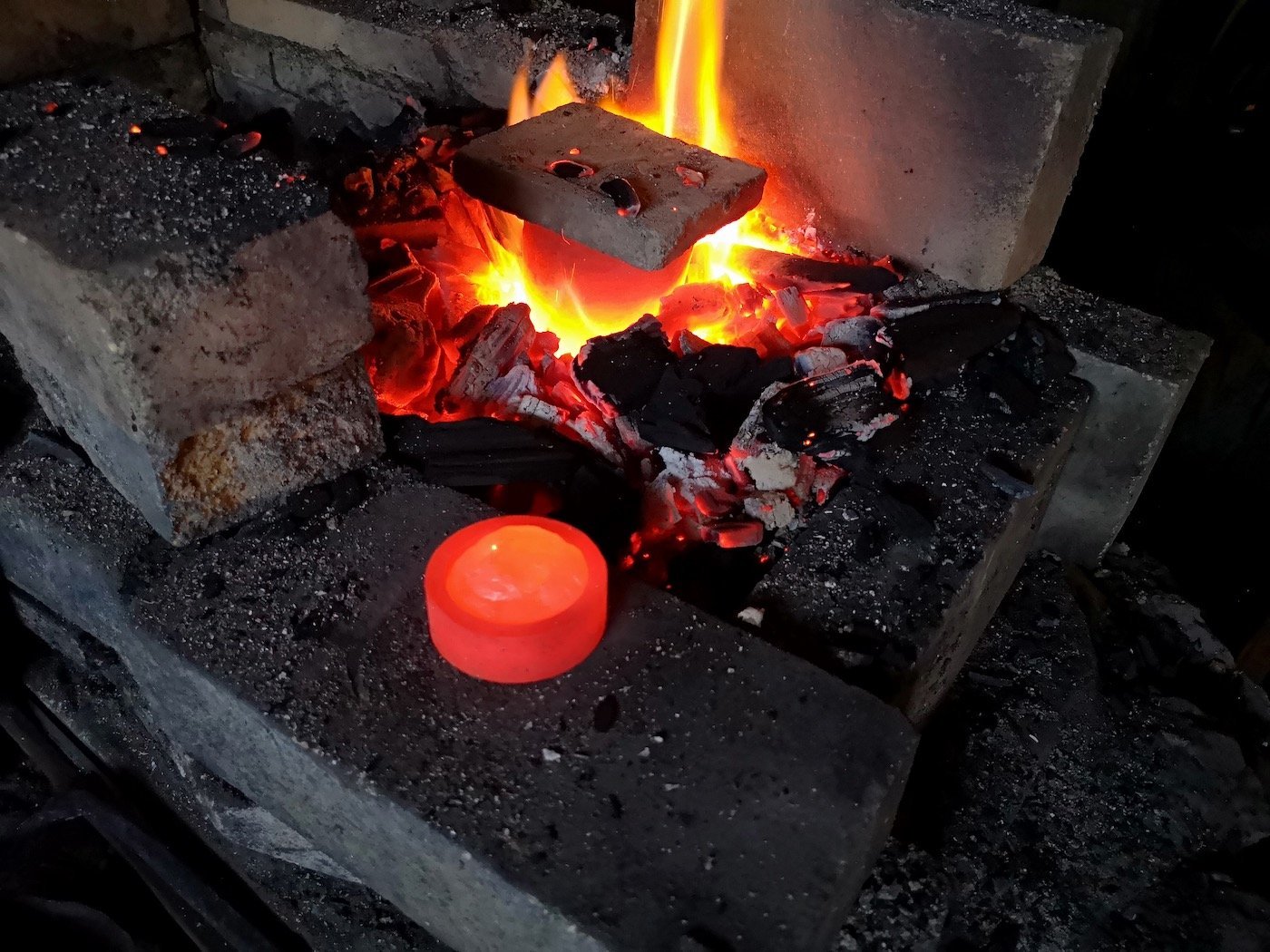
What about business right now?
“Today, De Bethune is doing well. Things are running smoothly, the team works together like a well-oiled machine. Professionals only. I’m proud to have achieved it. After the sudden departure of David Zanetta, Pierre Jacques is doing a great job in the role of CEO. Worldwide, there’s a better understanding of De Bethune watches. We produce 200 watches a year, with a workforce of 30 to 35. In 2022 we’ll be 20 years old. And we’re in particularly good shape. It’s a good period and I’m enjoying it with serenity. We didn’t get here by chance. But the planets are aligned favourably for us. People have understood that we’re all about authenticity and sharing.”

David Candaux: The price of independence
he beautiful village house dates from 1853. It hold a spacious watchmaker’s workshop of rare beauty. A genuine picture postcard, right down to the cows grazing peacefully at the forest’s edge. We are in Le Solliat, in the Joux Valley, two hundred metres from Philippe Dufour’s workshop and a short distance, as the crow flies, from the great Jaeger-LeCoultre.
Next to David Candaux at the workbench is his father, himself the son of a watchmaker. Watchmaking does not get more traditional than that. Yet David Candaux intends to carve out his own path.
Do these roots get in his way? No, just the opposite, they give him wings. Firmly grounded in the fertile watchmaking soil of this valley of horological complications, David dreams of carving out his own path. In other words, he wants his brand to blend in naturally with the landscape and let his voice be heard. But things are not as simple as that.
A methodically built career path
In 2017, David Candaux was admitted to the AHCI with his first watch, the Half-Hunter, after a solid and brilliant career thus far. Having grown up in the region, in 1994 he started at the Joux Valley Technical School while completing an apprenticeship with the valley’s grand old manufacture, Jaeger-LeCoultre, which at the time had a workforce of 268.
The Reverso Tourbillon was the first timepiece to spark his imagination. He told himself that his first watch would be a tourbillon. He would not leave Jaeger-LeCoultre until 17 years later, in 2011, by which time it had a workforce of 1,300. At Jaeger, he rose up through the ranks, a witness to the “hallucinating dynamic” that seized the brand during those years of mad growth.
The young man was ambitious and built his career step by step, methodically. For 13 years, while working during the day, he took evening classes to become a complete watchmaker. Then he did one training course after another: watch design, restoration, general mechanical engineering, a Master’s degree in industrial systems, right through to an MBA, obtained after three years of evening classes. By 2011, Jaeger-LeCoultre had grown so big it had become a “bureaucracy”. He felt ready to spread his wings.
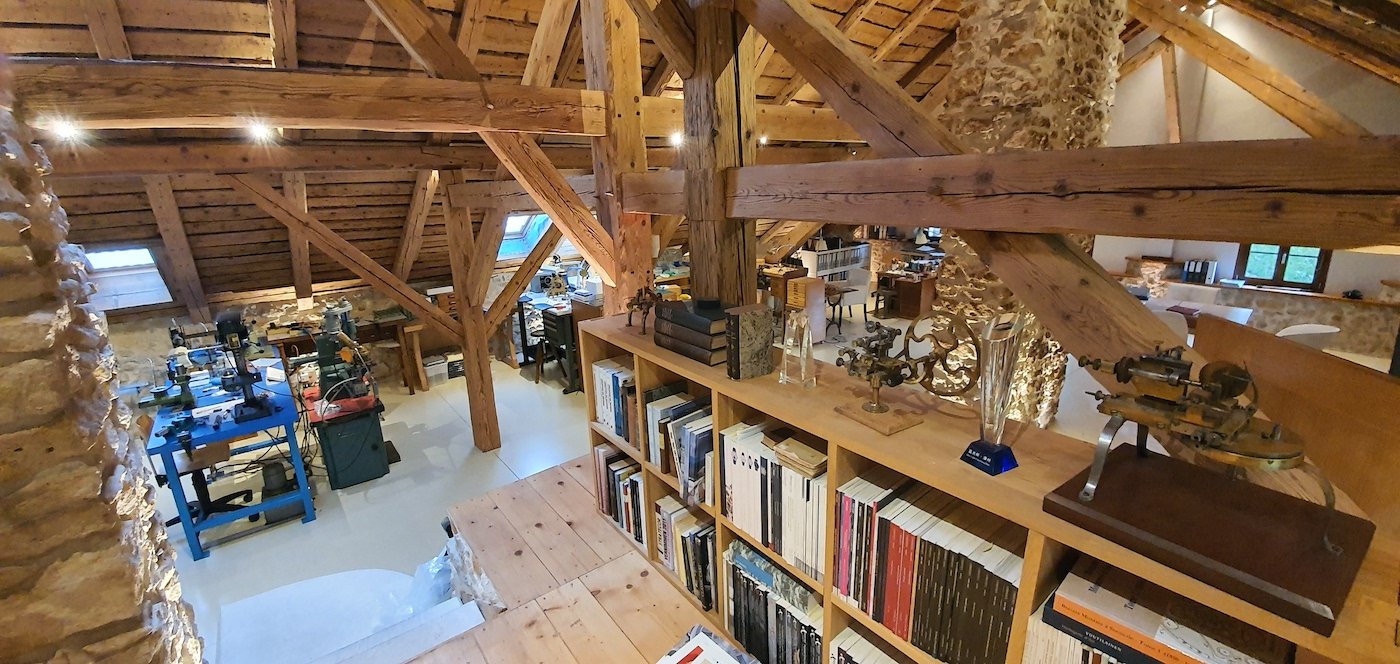
“Are you happy?”
For a while he worked with Jean-Marc Wiederrecht and helped develop the animated watch Poetic Wish by Van Cleef & Arpels. Then he set up as an independent watchmaker to do subcon- tracting, joined by three friends. Together, they worked on a whole series of creations including the HM6 for MB&F, designs for Bovet, then Badollet, Rebellion with designer Eric Giroud, and the FB1 by Ferdinand Berthoud with designer Guy Bove.
But one day, in the village’s sole street, he bumped into his neighbour Philippe Dufour, who put this simple question to him: “Are you happy?”
This question from the man with the pipe left him speechless. But it got him thinking. In 2016, David Candaux wrapped up (albeit with difficulty) his subcontracting business, and determined to go it alone, or almost, with his own watch, his own brand.

Fierce competition
He released his first watch, the Half-Hunter, the fruit of long reflection, in 2017. Which is how, the same year, he came to join the AHCI. The positioning of his tourbillon watch was tricky: its elongated shape gave it an unusual aesthetic, placing it in the higher price range. But his brand and name were young, virtually unknown, and to top it off, some people were out to throw banana skins in his path. Because “the cake had stopped growing and competition was now fierce”.
-

- The Half-Hunter watch, first creation of David Candaux
All his business plans turned out to be “off the mark”. He had invested heavily, he had travel expenses to pay for, exhibitions with zero sales; he needed to make his name known. The margins demanded were voracious and for the 14 watches he managed to sell over four years – still a remarkable achievement – he was left with only CHF 140,000 for himself.
“Launching a brand has got tough. Though I work virtually alone, I’m necessarily compared with recognised, established brands. It’s tough, because customers are adopting a wait-and-see approach. There’s the brand’s youth, its price, its unusual look... If you look closely, the explosion of prices for independents at auctions only actually concerns the ‘old’ independents. You just have to give it time.”
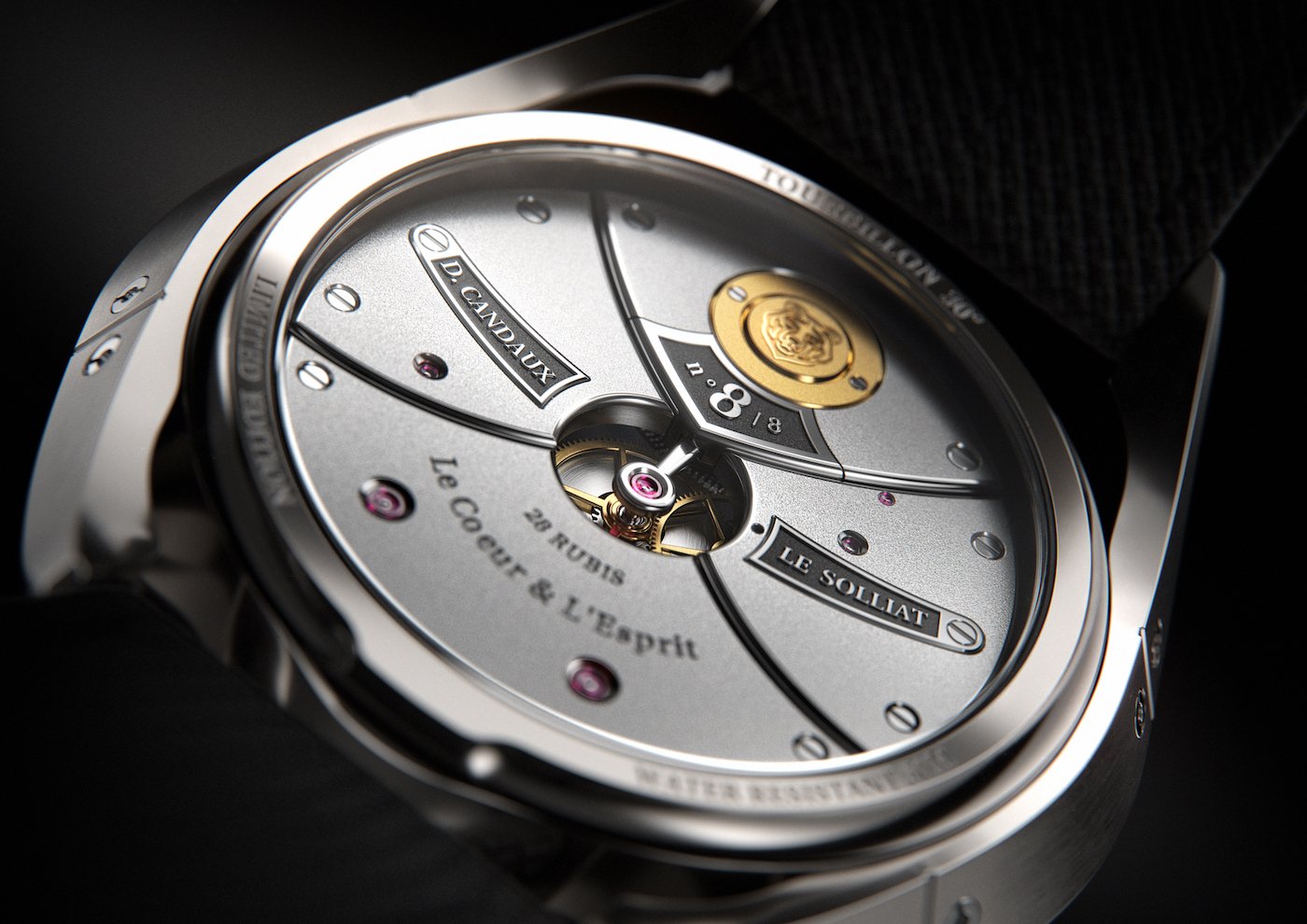
Newfound serenity
Have these trials and tribulations left him older and wiser? Whatever the case, David Candaux remains undeterred and does seem to be “giving it time” in the serenity of his workshop. His father, conscientiously finishing a component, comes to ask his opinion while David opens his notebooks, shows us his notes, unrolls his plans and points out the movements in the final phase of completion. One new timepiece is maturing, ready to be released. “A Covid watch”, he says with a smile. Genesis, born of the lockdown.
-

- The brand-new DC7 Genesis in titanium and the beautiful, sober architecture of its movement.
A watch with hours, central minutes and a tourbillon at 12 o’clock, inclined at 30°. With its blue, very legible dial and a somewhat sporty look, it is more streamlined and elegant than the Half-Hunter. Graphically, it plays the simple card of perfect vertical symmetry combined with horizontal asymmetry “like Da Vinci’s Vitruvian Man. A basic rule of aesthetics that I also use in the movement architecture.” Made entirely in titanium, Genesis is beautifully finished, with matte graining and flat Côtes de Solliat striping, which is extremely difficult to execute in titanium.
This modern and attractive timepiece, which is set to transform the perception of David Candaux watches, is mounted on a rubber strap with an entirely handmade Velcro fastening that developed into a nightmare. “This strap was a real mistake, I spent a fortune on it. At the end of the day I’m very pleased with it, but nobody really realises all the work that went into it. There’s R&D, development, prototyping, production... As if we were a big company.”
-

- DC7 Genesis Piece Unique by David Candaux and artist Saturno for the 2021 edition of the charity auction Only Watch
In his own fashion, David Candaux reveals the difficulties that can face master watchmakers determined to keep their independence. While the path of independence holds key lessons worth meditating upon for the watchmaking sector as a whole, it is no bed of roses. Just like freedom.
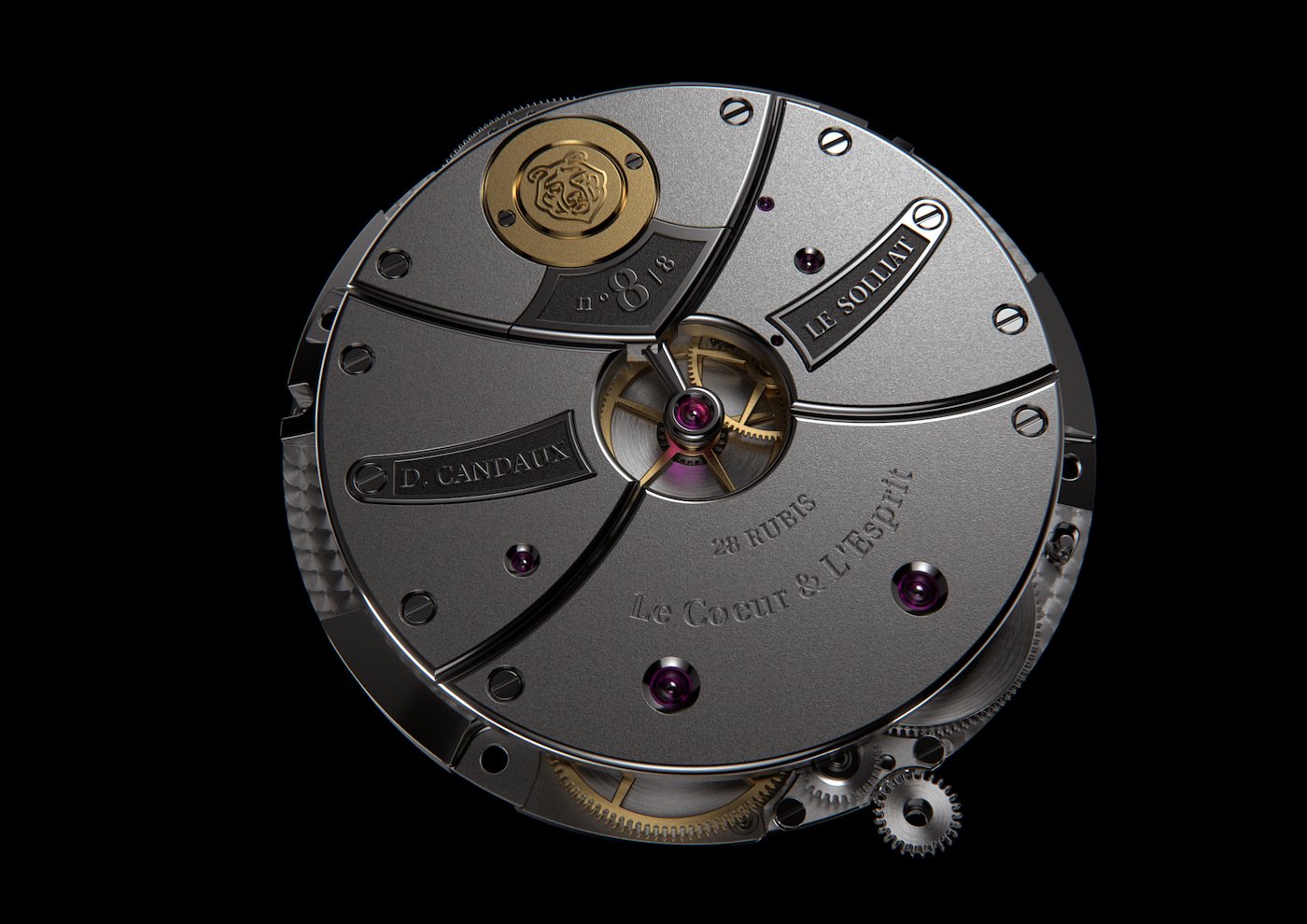

Ludovic Ballouard: The accidental philosopher
udovic Ballouard has been self-employed for the past twelve years, makes twelve watches a year all on his own and has no intention of making more. Twelve watches a year that literally turn time upside-down, all the better to tell it the right way up. Just to ensure you grasp the full philosophical measure of taking time.
Based deep in the heart of the canton of Geneva, in the former post office of the hamlet of Athénaz and just a stone’s throw from another renowned independent watchmaker, Antoine Preziuso, this son of a Breton farmer who became a master watchmaker is at last savouring the fruits of his labours and passion.
And it’s about time, because the man himself almost sank without trace, caught between grand financial manoeuvres far bigger than himself (when Harry Winston, which had commissioned his famous Opus XIII, was taken over by the Swatch Group, which wanted nothing more to do with it).
-

- “Where the hell is Opus 13?” An investigation (in Fr.) that appeared in Europa Star Première in 2015.
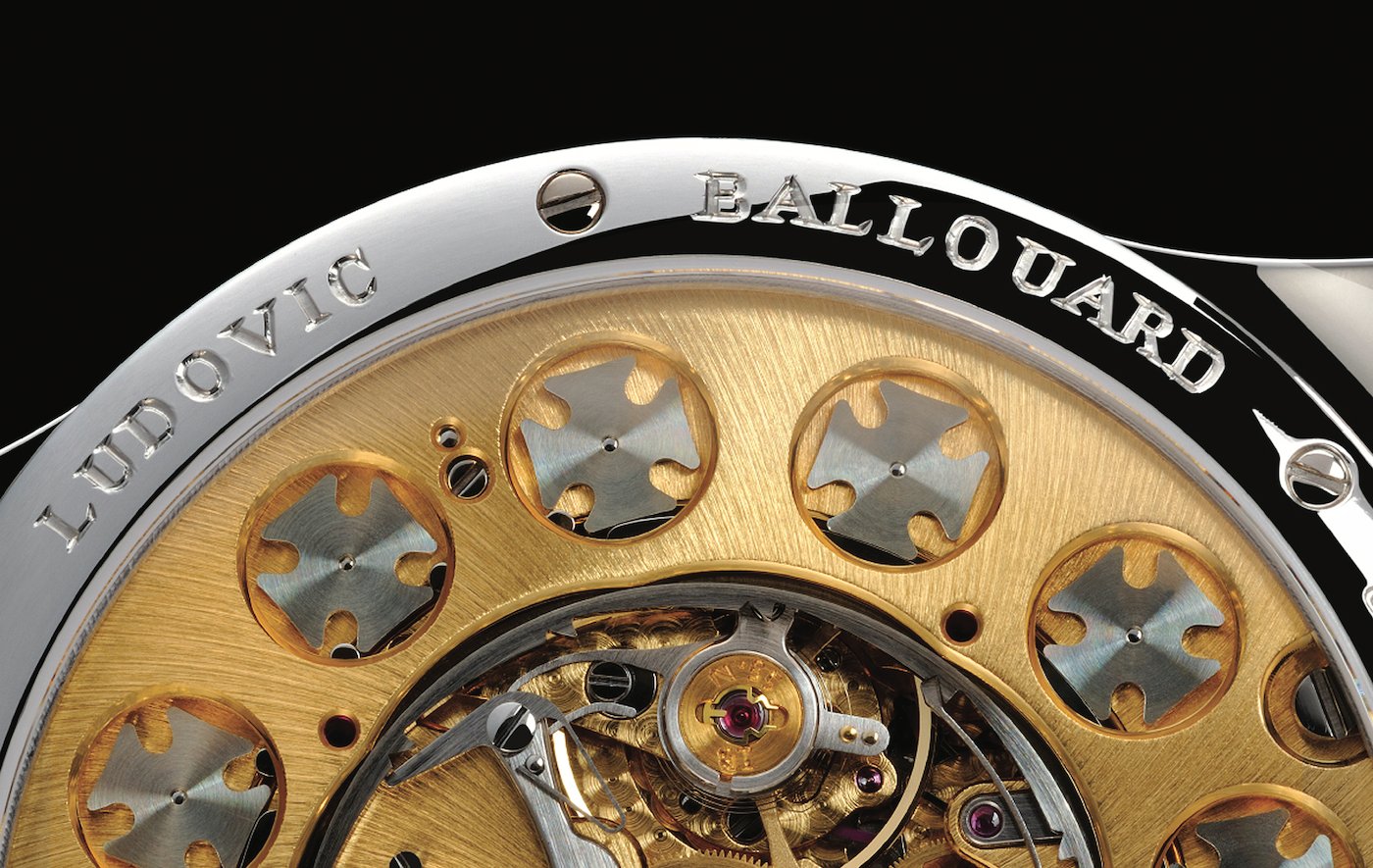
A colourful career
With his pirate looks, there can be no doubt that Ludovic Ballouard (“Ludo”, as he is known in the close-knit circle of independents), was indeed born on a farm not far from the sea, in the Côtes d’Armor region of Brittany, France. After completing his schooling, then training as a shorthand typist, his dream as a 15-year-old was to become a dental technician. In vain. His application was rejected. A school careers advisor advised him to learn watchmaking, something that had never occurred to him. It was revelation.
He was 15 years old and applied to Rennes watchmaking school, which accepted thirteen pupils. Once again, he was turned down. “They didn’t want me. I wept.”
He went back to the farm. But he immediately returned to the school with a model boat made entirely by his own hands. The teacher who received him was touched. He admired the boy’s talent, took pity on him and made an exception.
That was in the 1980s. At school, the first year was spent studying clocks. The second year, they did nothing but quartz (“that pissed me off completely,” he says) and only in the third year did they turn their hand to mechanical watches. The kid proved a quick learner. After three months, he had completed the entire programme and was bored. He left the school because he wanted to work. But he took the exam as an external candidate, passing with flying colours, just so he could have the diploma.
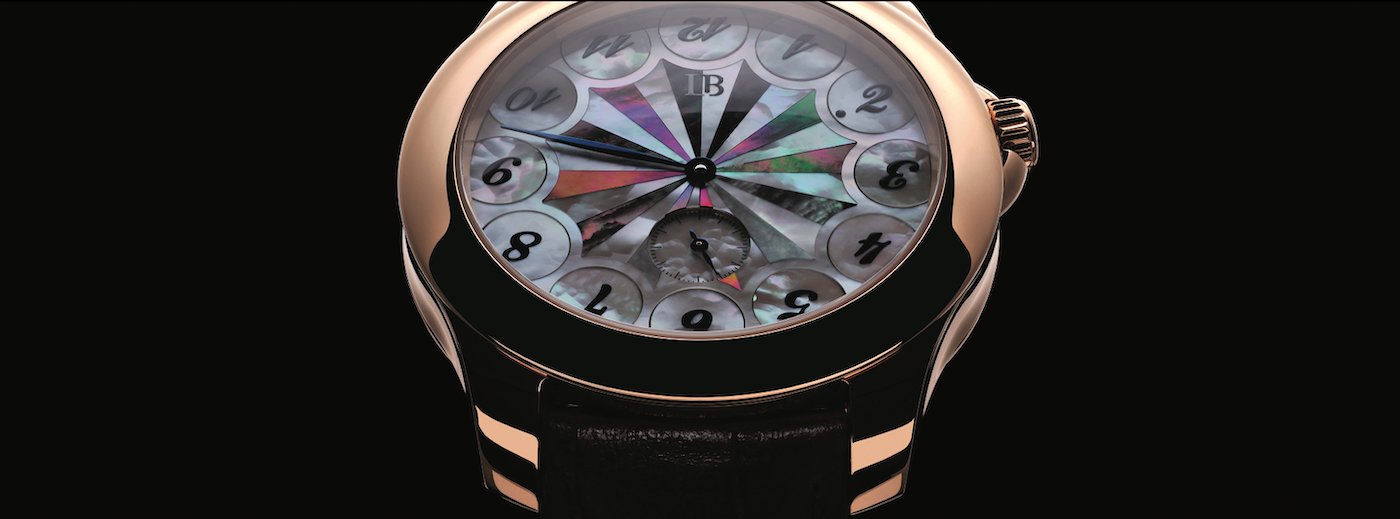
A restless soul
He found a job in Lorient, Brittany, with a watchmaker, but only lasted six months. Besides changing batteries, there was nothing interesting to do. So he got in his little Renault 4 and decided to try his luck in Switzerland. He ended up with Lemania in the Joux Valley. He was taken on, but only stayed six months: the cold was more than he could stand. So he returned to Brittany and changed careers.
For eight years, he worked as a technician doing the maintenance on flight deck instruments at Dinard Airport. Boeings, Airbuses – a dream job for someone like him, crazy about model aircraft. One of his colleagues was an ex-watchmaker and together they would talk about the distant world of watches and watchmaking.
He asked the airport for a very modest rise, which was refused. That riled him. He began leafing through watchmaking magazines and decided to send a CV to the watchmaker who made the most expensive watch in the whole catalogue: a certain Franck Muller. He received a very quick reply: come for a trial. When he arrived in Genthod, he was given ten Lemania movements, chronographs that needed taking apart, cleaning, oiling and reassembling. Although he had no experience, he did the whole lot in just four days. He was hired, with a CHF 4,500 salary – at the time, 15,000 French francs more than he earned in Dinard. Bingo.
He went on to stay for three years and has happy memories of that period. He loved living in the Lake Geneva region. But then that episode came to an abrupt end.
So he set up his own business in Geneva, opening a casing-up workshop, the principal customer of which was Vacheron Constantin. But he was bored and gave up. He had a desire to create. Learning that a watchmaker had just been dismissed by François-Paul Journe, he phoned him up and was taken on the same day. The François-Paul Journe period, longer than any previous one, lasted seven years.
He worked on the Octa, after which François-Paul Journe assigned him to the tourbillons, but changed his mind one month later and asked him to take charge of his Grande Sonnerie. This was a kind of consecration. The objective was to make one watch in three to four months. Ludo succeeded in making between six and seven per year.
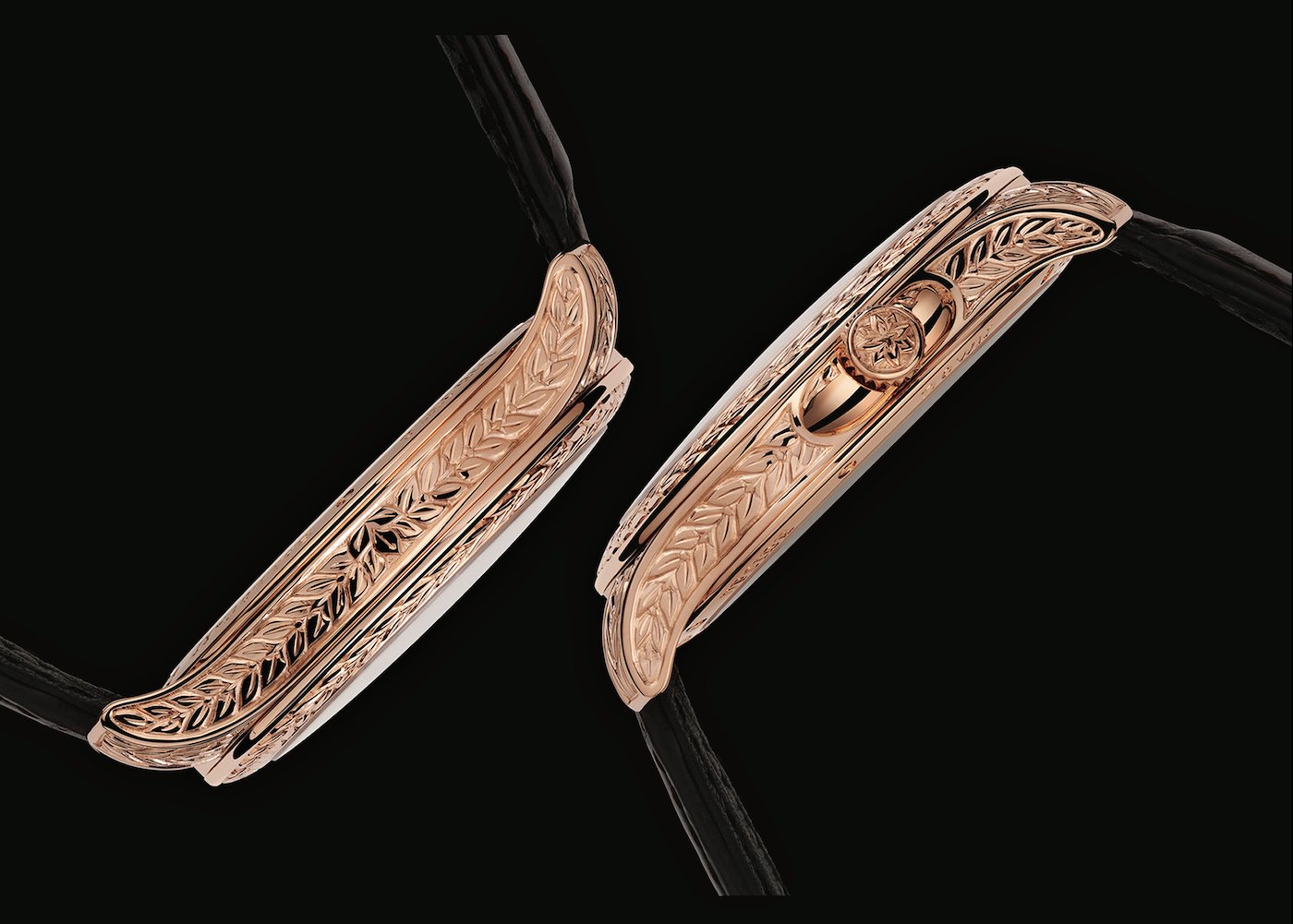
“The only time that counts is the present”
Then came the crisis of 2008-2009. His wife was ill. He decided to resign and try his luck with his own brand. But he needed an idea. He went out at 11am and lunched alone, telling himself that he’d have the idea before the meal was over. At 2pm, he had it.
He warned twelve of François-Paul Journe’s retailers whom he knew from his work on the Grandes Sonneries that he was preparing “a real surprise”. He asked for an advance of 50 percent and in the space of a few days had raised several hundred thousand francs.
-

- The Upside Down
Six months later, in early 2010, the watch was ready: the Upside Down. This astonishing watch, which displays the past and future times upside down and only the present time the right way up, represents a whole new, philosophical way of looking at time. Only the present counts. It was noticed, receiving the jury’s special prize at Montres Passion in 2010.
“The financial crisis was ravaging the world. It seemed as if the only subject of conversation was the stock exchange, which was collapsing before our eyes. All the figures were turned upside down (...) While all the figures were being turned on their heads, just one remained true, to my eyes, one solitary figure that sufficed to restore our confidence in life: the present time (...) A watch that made perfect sense in a world gone crazy.”
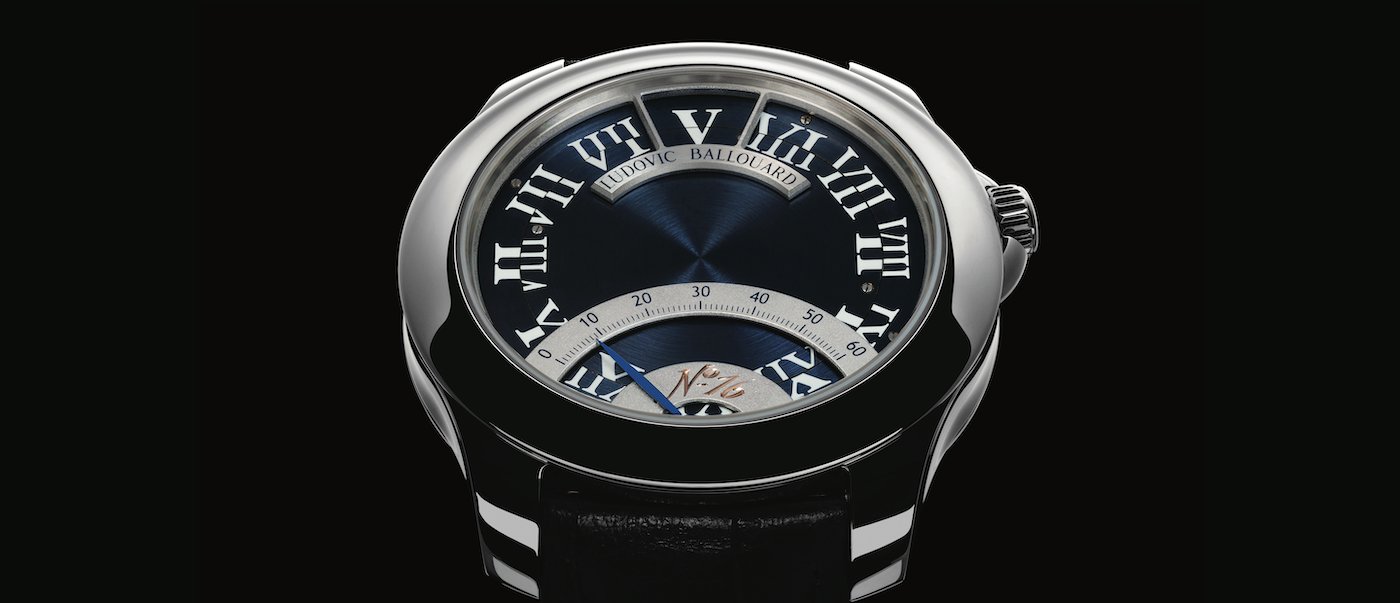
A second complication
In 2021, Ludovic Ballouard issued his second complication: the Half-Time. The spirit was the same, but its movement was even more complicated. This time, the hour numerals were cut in half vertically and set on two discs rotating in opposite directions. Only the numeral of the present hour is recomposed and becomes legible. All the others are hidden from sight. The minutes of this eccentric jumping hours watch are displayed on a retrograde dial at 6 o’clock.
Symbolically, these split hour numerals that can only be read when their two halves are reunited are, to Ludo’s eyes, like two lost beings who find one another again, love one another and become one.
-

- The Half-Time
Like the Upside Down, which can be executed in a thousand different ways on request (with precious stone dials, miniature paintings, gem settings, engraving, mother-of-pearl marquetry), and the hour numerals presented in every possible calligraphy and language, the Half-Time too can take on innumerable faces at will.
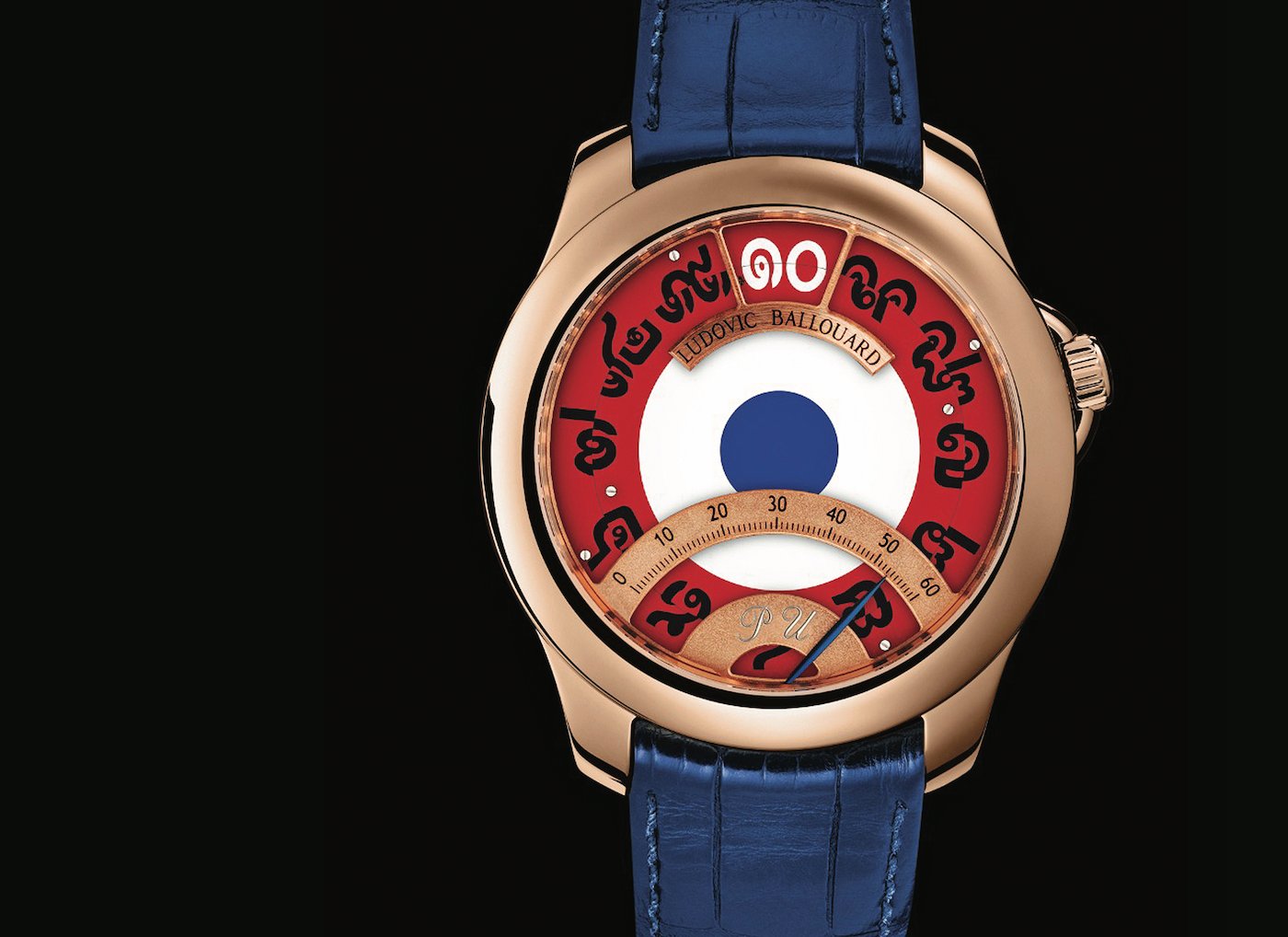
The comeback of the collector
Back in the limelight after the aforementioned Opus XIII affair, which almost saw him disappear lock, stock and barrel from the watchmaking stage, Ludovic Ballouard looked on enthusiastically as a new circle of much younger collectors emerged. In Japan, the average age of his customers is 30. Only recently, he sold a watch to a young man of 22.
"Now, everything is done via Instagram and I’ve just posted an explicit image: I now accept payment in bitcoins. Requests have doubled as a result.” In anticipation of a new surprise: his B04 movement. “A very unusual movement that will combine two very different times. If I don’t succeed, that means it can’t be done.”

Rexhep Rexhepi: In pursuit of authenticity
he young Rexhep Rexhepi (34 years old) is a watchmaking sensation. No one saw him coming, but in the space of a few short years he has enjoyed a meteoric rise, producing watches of the highest technical and aesthetic quality and obtaining the GPHG Men’s Watch Prize in 2018.
“The sole recipe is authenticity,” explains the young man. “Being true to yourself, open, genuine, crystal-clear. No sleight of hand, no role-playing. Be yourself, pursue your dream. It’s as simple as that. But it’s a long road...”
What he calls a long road, others would call a meteoric career. And today, as requests flood in, Rexhep Rexhepi restricts himself to producing 35 watches a year, with ten employees. Given the quality of his production, that is already a considerable volume in itself.
-

- The workshop of Akrivia in the Old Town of Geneva
- ©Fred Merz/Lundi13
An epic journey
On 6 March 1998, war broke out in Kosovo. The young Rexhep, aged 12, was forced to flee the country and join his father who had been working in Switzerland for a number of years. He grew up with his grandmother, and the family lived on a shoe-string, supported by the money his father sent from Switzerland. “We didn’t have much,” he explains, “but I was very good with my hands even as a child. If we wanted a toy, we had to make it ourselves. And I was fascinated by my father’s watch, a Tissot, that I wanted to open and never succeeded.”
“I was fascinated by my father’s watch, a Tissot, that I wanted to open and never succeeded.”
When, as a war refugee, he disembarked at Geneva Airport, he was fascinated by all the posters boasting the virtues of the world’s most beautiful watches. Yes, he had really arrived in the “land of watches”. The fascination never left him.
In his late teens, he did a watchmaking apprenticeship at Patek Philippe while at the same time attending the Geneva School of Watchmaking. He assembled watches, cased them up. “An excellent apprenticeship that taught me the basics and instilled the necessary discipline into me.”
But he wanted to learn more. He went to work for BNB, a large manufacturer of complicated movements, and despite his young age was soon put in charge of a group of 15 watchmakers. His three years with BNB were followed by two very formative years with François-Paul Journe. He worked on the Octa, the Chronomètre Souverain and the Résonance. He was curious, passionate, but above all he wanted to understand how François-Paul Journe had succeeded in setting up and developing his company. Because he had an idea in mind.
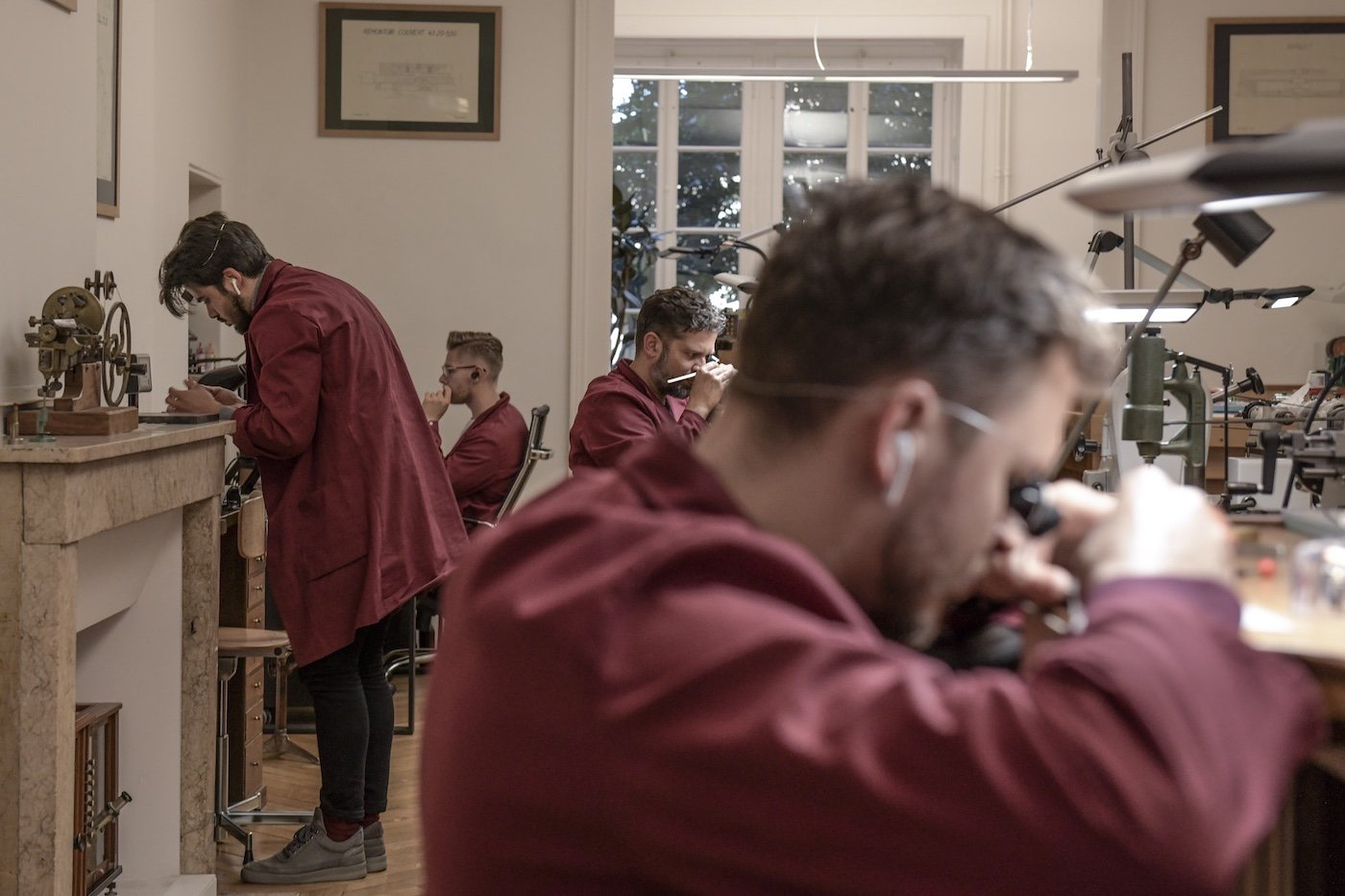
Creating his own watch
He struck out on his own and by 2012, he was ready. “Or rather, I thought I was ready, but I wasn’t, really. I was 25, I had ideas, I was a good watchmaker, but as for everything else – sales, distribution, communications – I had everything to learn.” After two years, he sold the business. Two difficult years during which “you ask yourself plenty of questions, you ask for help and get a thousand conflicting pieces of advice. But I needed that to reconnect with my passion, find my ideas again, my desire for authenticity, and after that, I made a fresh start.”
Above all he wanted to understand how François-Paul Journe had succeeded in setting up and developing his company. Because he had an idea in mind.
And since that fateful year of 2014, everything has fallen gradually into place. He has moved forward at his own pace and grown organically. “I don’t hide behind a model, I focus on my ideas and strive to realise them.”
-

- The AK03 Tourbillon Chiming Jump Hour. The entire movement’s visible and non-visible parts have been hand finished using classical techniques such as: anglage, black polish, perlage, Côtes de Genève, Hand graining and polishing, hand engraving.
But up to 2017, he was still obliged to do subcontracting to keep the wheels of his small business turning. And then in 2017, the skies cleared. Collectors took an interest in the newcomer. His entire production in progress was sold pre-emptively.
During his career, Rexhep admits to having “accepted things I’ve afterwards regretted. But I’m still grateful for the slaps in the face,” he laughs.
-

- The AK06 with its manual-winding movement created, developed, decorated and assembled in-house.
Grow up, not out
After the spectacular take-off of 2017, Rexhep could have increased his output. But he decided to do just the opposite. His stringent requirements limit his production and he has no intention of deviating from them. Just the contrary.
As an authentic watchmaker, he insists on using his hands, working old machines, lathes, punching machines, wonderfully reliable and precise, and which also offer direct creative, manual freedom that no CNC tool can ever replace. “They force you to think and create in a different way. When the possibilities are narrower, you have to think in practical terms. The end result is something simpler, purer, more essential.”
"When the possibilities are narrower, you have to think in practical terms. The end result is something simpler, purer, more essential.”
Once again, as with all master watchmakers, transmission is a key concern. Acquiring skills by transmission in order to hand them down in his turn.
-

- The Chronomètre Contemporain. Traditional Black Enamel Grand Feu on 18K gold plate and 5N index printing on the Red Gold 5N version; White Enamel Grand Feu with blue printing for the Platinum version.
With Akrivia, Rexhep Rexhepi controlled his products’ development (with the help of an engineer) and prototyping, he had his own components made for him by trusted partners in Geneva and the Joux Valley, and did all the decoration, assembly and adjustments himself. He strove to do as much as possible in his workshop.
But he did not yet have control over his own cases. Eager to pass on his knowledge and also learn more himself, he joined forces with Jean-Pierre Hagmann, a legendary master casemaker (his cases, such as those for the most famous minute repeaters by Patek Philippe, achieve record prices at auctions), now in his eighties and “somewhat forgotten,” Rexhep adds. He joined him and today officiates in the arcade on the opposite side of the street, filing, sawing, turning and milling.
“With him I’m pushing my understanding, finesse, subtlety, craftsmanship to even greater depths. Today you have to go out and get the information. Transmission doesn’t occur naturally any more. Yet riches come from sharing, and now the watchmakers I work with are receiving this transmission. The secrets of the trade.” Now, all Akrivia’s 35 cases a year are handmade by Jean-Pierre Hagmann under the attentive eye of those who, one day, will take his place.
-

- Rexhep Rexhepi joined forces with Jean-Pierre Hagmann, a legendary master casemaker.
“Time is the reflection of our work”
As with all trades and all crafts, a watchmaker also improves over time. Rexhep unhesitatingly admits that his 2012 work “is not as good” as today’s. He cites his Geneva stripes as an example. He tried his hand at them in 2012 for the first time, but it was not until 2017 that he finally achieved the desired result. “Time is the reflection of our work.”
“Transmission doesn’t occur naturally any more. Yet riches come from sharing, and now the watchmakers I work with are receiving this transmission. The secrets of the trade.”
He cites another example: at an auction he examined two antique ébauches from the 1930s or 40s, originally totally identical, one that was magnificently finished at the time, while the other, finished in the 1980s, was “a real disaster”. He sees that as a flagrant illustration of the terrible loss of know-how during those years.
Let’s not forget that Swiss mechanical watchmaking almost died out. And it is doubtless thanks to a realisation of how important the transmission of tradition is that the journey will continue.

Svend Andersen: Chance and necessity
vend Andersen was born in Denmark in 1942 to a family of smallholders. As a child, he was fascinated by mechanics and made his own bike (if he wanted a bike at all, he had no choice). Obligatory schooling behind him, he considered enrolling as an apprentice in a factory producing instruments for boats, bronze suspension lamps and dials.
But when the time came to sign the contract, he learned that the factory was on the point of bankruptcy. Dejectedly, he and his father returned home without signing.
A short time later, his father read a small ad in a newspaper: a watchmaker in Padborg, ten kilometres from the German border, was seeking an apprentice. Watchmaking, why not? After all, that was mechanics too. “I became a watchmaker by chance.” On completing his apprenticeship, he spent six months at the Royal Danish Academy to take his diploma.
“I became a watchmaker by chance.”
Another small ad
In 1963 he was 21 and had just completed his military service. He came across a small ad in the Journal Suisse d’Horlogerie: in the Haut-Valais region of Switzerland, a watchmaker speaking German and English was sought. His profile matched. And the salary was twice what he could hope for in Denmark. He went. It was a watch shop in Brig, the first stop after the Simplon Pass. In summer, coaches of American tourists from Italy made regular stops there. In the winter, he was loaned out to a shop in the ski resort of Saas Fee. But skiing was prohibited, for fear of him breaking a leg.
One evening, in a bar, he made the acquaintance of two watchmakers who worked for Gübelin, a large retailer in Lucerne. By a stroke of luck they were looking for someone who also spoke English. He was hired on the spot.
Gübelin also had a shop in Geneva and agreed to send him there. He stayed with the firm five years, always in after-sales. But he never left the city.
At Gübelin, he worked in the after-sales department. In the drawers were numerous small ladies’ movements waiting to be freshened up, recased and transformed. In Lucerne, he met the woman who would become his wife. She was a trilingual interpreter and wanted to go to French-speaking Switzerland to perfect her French. A second stroke of luck: Gübelin also had a shop in Geneva and agreed to send him there. He stayed with the firm five years, always in after-sales. But he never left the city.
Clocks in bottles
Late into an alcohol-fuelled New Year’s Eve 1968, while trying to read the time through an empty bottle, he had the idea that was to propel him to fame. An idea that he brought to fruition in five months and presented in 1969 at the Montres et Bijoux exhibition in Geneva: the bottle clock. The first had a hand-wound eight-day movement. It was set and rewound via the cork. All the mechanical pieces were inserted through the neck and assembling them required 17 specially made tools. “And great dexterity, of course,” smiles Svend.
Within a week, his spectacular achievement had been relayed all over the world by all the press agencies. His bottle clock made him a celebrity. His exploit introduced him into the circle of collectors, but not everyone was happy – including the then boss of Gübelin, who took umbrage at the sudden notoriety of his employee.
-

- The young Svend Andersen with his first clock in a bottle in 1969
Late into an alcohol-fuelled New Year’s Eve 1968, while trying to read the time through an empty bottle, he had the idea that was to propel him to fame: the bottle clock.
But Patek Philippe, who had got wind of the story, came looking for him and with respect, because when he arrived to sign his contract at the Patek offices, Henri Stern came to greet him and welcomed him in. Svend still hasn’t got over it even today. He was immediately assigned to the grand complications workshop. He stayed there nine years, working on perpetual calendars, minute repeaters and chronographs.
He turned his hand to everything and, he says, solved numerous problems. He was also asked to work on the restoration of antique watches for which had a special flair, treating them delicately, understanding that he should not touch the patina, working with a polisher with the same sensitivity as himself.
But most importantly, he got to know Louis Cottier’s World Time model. One day, his boss, the famous master watchmaker Max Berney, arrived with a box of movements and dials from the workshop of Louis Cottier, the inventor of the World Time mechanism. He asked him if he could do anything with them... A dozen or so timepieces resulted.
-

- Svend Andersen’s first Worldtime watch dates from 1989. Its additional module is 0.9 mm thick, compared to the 1.2 mm thick dial of the models by Louis Cottier, the inspiration. Since then, he has created many more.
New cases for old movements
In late 1972 while he was still working for Patek Philippe, an important collector from Lucerne privately brought him a superb grand complication movement by Louis Audemars, asking him to recreate a pocket case in gold to house it with dignity. Svend Andersen, who at that time knew little about cases, inquired everywhere, rooted through archives with the help of Fabienne-Xavière Sturm, then director of the Geneva Museum of Horology and Enamel.
Finally, he hunted down one of the last case-makers capable of producing a gold case for such a movement. The collector showed the piece off at a private meeting in Munich. Suddenly, it was all systems go. He received an “avalanche of requests”, although still employed by Patek Philippe. He left Patek in 1979 – on good terms, they were one of his first customers – recovered the machines from a case-maker’s workshop that was closing and set up on his own with the Perret case.
He restored and re-cased in gold movements originating mainly from Germany and Switzerland – including those of numerous Jewish families who had hurriedly had their gold watch cases melted down. Requests flooded in. He saw every possible style and period pass before him and acquired a wealth of knowledge. And he also worked for the nascent Antiquorum.
Transmitting knowledge
Osvaldo Patrizzi and Svend Andersen complemented one another. Andersen had an extensive library of watchmaking books, a gold mine for Patrizzi. One of his collaborators, the great expert Nathan Schmoulovitch, introduced him to a young watchmaker who had just graduated brilliantly from the Geneva School of Watchmaking, who did not wish to enter a factory but was determined to become an independent watchmaker – a certain Franck Muller.
He recruited him part-time, leaving him the run of the workshop for the remaining 50 percent of the time. This was a formula Andersen was to repeat several times with others, thus making a noteworthy contribution to the transmission of knowledge to a generation of new watchmakers.
At the same time, Alan Banbery, who was in charge of the Patek Philippe collection, was planning with Martin Huber to publish the first deluxe book on Patek watches. But most of the movements in the collection were oxidised, the cases scratched... Banbery asked Andersen to restore them. The latter entrusted one by way of a trial to Franck Muller. The trial was conclusive. Over three years, they restored 60 pieces.
-

- Mundus, the world’s thinnest worldtime watch
Con uno cuore
1984. The golden age of Italian collectors, avid for wristwatches con uno cuore – with a heart. They rushed to Andersen with beautiful movements for which they wanted cases made. His associate, Perret, threw in the towel. He did not want to make wristwatches.
So for his cases he called on Jean-Pierre Hagmann, a watch case wizard, who had just set up his own business. Andersen was his first customer, and today, aged 82, Hagmann can be found alongside none other than Rexhep Rexhepi!
With Hagmann, Andersen perfected the water-resistant sliding bolt for the small minute repeater movements that he inserted into wristwatches. At the same time, he began creating his first watches, signed “Andersen Genève”. These were one-off items only, mainly retrograde perpetual calendars.
And it was not until 1989 that he issued his first collector’s item, a world time model, 24 pieces by subscription. Inspired by Cottier, its additional mechanism was just 0.9mm thick including the dial, compared with 1.2mm plus the dial in the case of the Cottier model. Of the 24 proposed subscription watches, 18 were snapped up immediately, which gave him ample funds to buy the gold for the cases.
There followed numerous models which attracted attention, including the Christophorus Colombus of 1992 – 500 pieces produced, a remarkable figure; one-off minute repeaters and retrograde perpetual calendars.
Then in 1996, yet another stroke of luck: an Italian – decidedly, Italy played a major role in the revival of mechanical watchmaking – showed him a pocket watch with erotic automatons and asked if he could produce a wristwatch model. Bingo. To date, some 170 pieces have been produced, with miniature painting, engraving and between nine and eleven moving parts, which is quite an achievement.
-

- In 1996, an Italian collector asked Svend Andersen if he could make an erotic wristwatch with automata. Since then, Svend Andersen has made more than 170 of them, with between 9 and 11 moving parts.
No secrets
Not only an endlessly inventive master watchmaker, Svend Andersen is also a man who unites people and keeps no secrets. Not content with being the man behind the AHCI (an academy created in reaction to and defence against the groups that began buying or relaunching forgotten historical brands), Svend Andersen was also one of the driving forces behind the addition of the art of watchmaking to the UNESCO List of Intangible Cultural Heritage.
“Transmitting your knowledge forces the other person to think for themselves,” the maverick Andersen is fond of saying. His way of transmitting knowledge is the exact opposite of someone like Philippe Dufour, for example, who has difficulty accepting that people do not exactly reproduce his way of doing things. Svend cares little about whether the young watchmakers he helps do things this way or that. The beauty of the result is all that counts.
His way of transmitting knowledge is the exact opposite of someone like Philippe Dufour. Svend cares little about whether the young watchmakers he helps do things this way or that. The beauty of the result is all that counts.
-

- In 2015 the 5th edition of World Time watch – the “Tempus Terrae”- commemorated the first World Time wrist watch with two crowns developed by Louis Cottier in the 1950s.
And transmission works both ways. It is all about give and take. In return, Svend also benefits from the different skills of his young protégés. Transmission is not reproduction. One transmits one’s knowledge to be surpassed, to enable watchmaking culture to evolve.
-

- The Worldtime 1884 model
That, precisely, was the message Pierre-Alexandre Aeschlimann intended to convey when he took over the brand back in 2015, in perfect accord with the maestro. Two young, passionate watchmakers have already been hired; two others are still being sought. The Andersen story is set to continue and to endure in the spirit of universal curiosity, knowledgeability, dexterity, vivacity and sharing of the man who inspired it.
-

- Jumping Hours 40th Anniversary in Platinum. An exceptional dial in hand-guilloché 21K blue gold with the “losanges magiques” rhomboid motif that reflects the light differently depending on the direction. Extremely difficult to achieve, it requires the use of no fewer than three different engine- turning machines. Frédéric Piguet 11.50 double-barrel automatic movement with the Jumping Hours module developed and manufactured at Andersen Genève. Limited edition of 40 pieces.

Vianney Halter: A free agent
et’s start with Vianney Halter’s biography. He was born in Suresnes, France, in 1963, to a railway worker father. But in his head, he was always a watchmaker. “I had a thing about cogwheels,” he says in justification. Locomotive syndrome?
A precocious child, he acquired the first of his collection of building clocks at the age of 11, fascinated by the clock on the rectory tower of Limay, to which town his parents had relocated, to live in refrigerated wagons converted into a house. His eyes already lifted skyward, he made up stories for himself. A few days later, the clock took pride of place in his bedroom, marking the foundation of his philosophy and his art of living. (Today, he owns more than a hundred).
Watchmaking school, naturally
At the age of 15, he became a pupil at the watchmaking school in Paris. He had prepared for it long in advance by recovering, dismantling and reassembling old alarm clocks, over and over again. He was also interested in history – watchmaking history, and through it, world history. He was fascinated by the masters of time who made possible the conquest of the seas.
At the age of 17 he left the school which, at the very end of the 1970s, was still, fortunately, teaching conventional watchmaking: filing for six months, turning, tempering, etc. “I was pretty good at it,” he says, proudly. He did different things too, such as metal sculptures, and was a quick worker. Since he was ahead of schedule, he was given free time to go and work on forgotten machine tools that he started up again to cut gears, wheels and the like. “That gave me a taste for making unexpected things.”
From there, he went straight to work in a clock restoration shop. He stayed one year, learned a lot, enjoyed the work, and was productive. After that, he was recruited by an independent watchmaker in the 13th arrondissement who restored wristwatches. “There was a huge stock, interesting pieces. It was like school all over again. I made wheels for cylinder watches, cut corundum stones, special parts such as detent levers, complicated parts. And I did that for two years.”
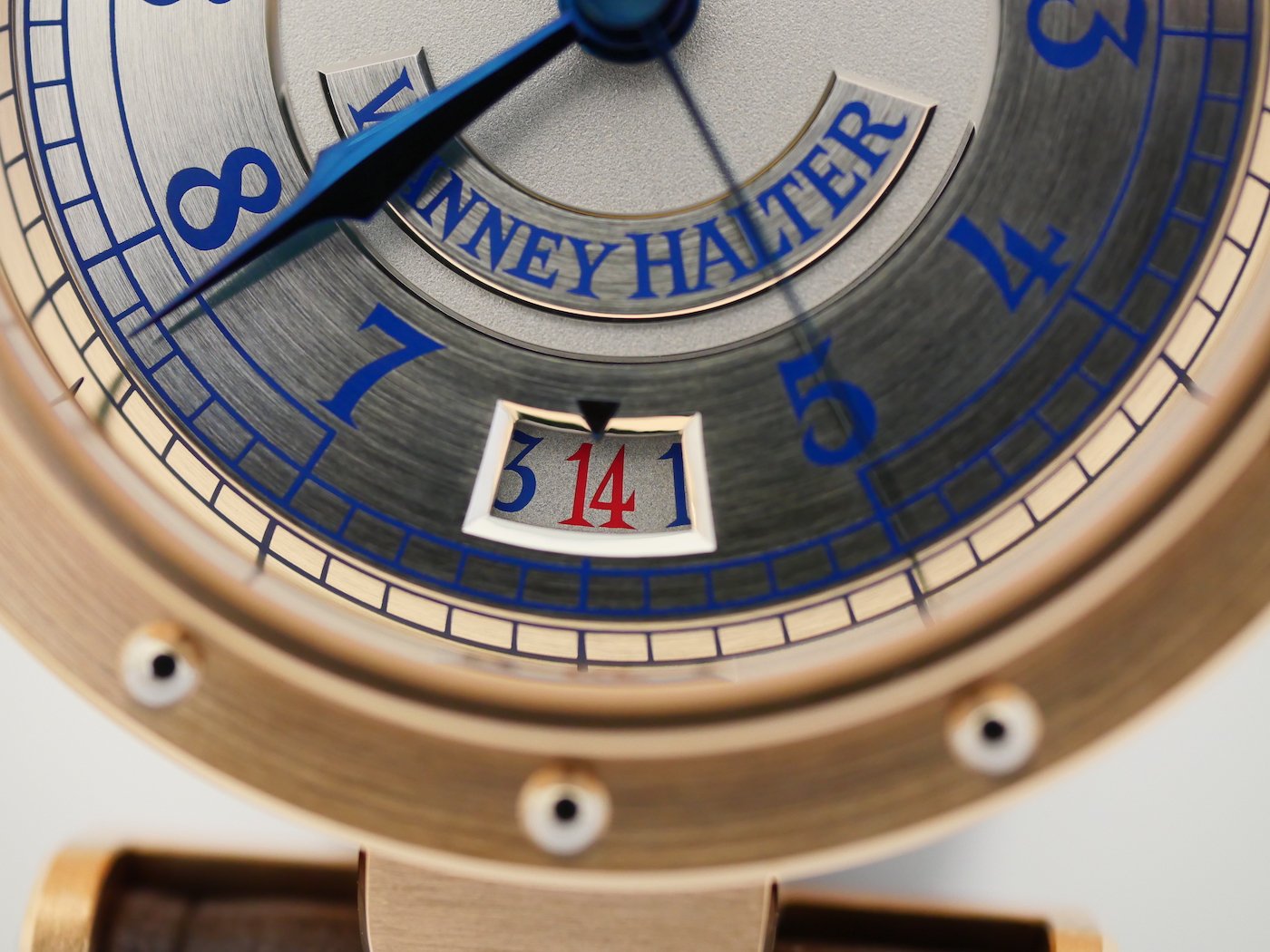
Party time
Then he turned 20 and took a gap year. It was party time. Bains Douches, Palace, New Morning, Gibus... he got to know the night-life of Paris by heart. He met Gainsbourg, Coluche – and Sophie. A child was born (Victoire, who now works with him and became Denis Flageollet’s daughter-in-law).
He returned to his watchmaking tasks, but this time for himself. He was 24 years old and had a small restoration workshop. He met François-Paul Journe, who at the time was also restoring clocks, in particular for Asprey, and sent him customers.
He was itching for exotic travel when Journe told him he was in the process of setting up “something” in Switzerland, at Sainte-Croix, in the mountains above Yverdon. He went along to see, meeting, among others, Denis Flageollet and Dominique Mouret, a highly reputed restorer of antique watches (who restored the Scheufele/Chopard collection).
The “something” was THA. He worked hard, with Denis Flageollet in particular, and even more especially for Breguet, then owned by Investcorp, which ordered 20 watches. He also developed the Mystérieuse. The same period saw the beginnings of F.P.Journe watches, with the Tourbillon Souverain.
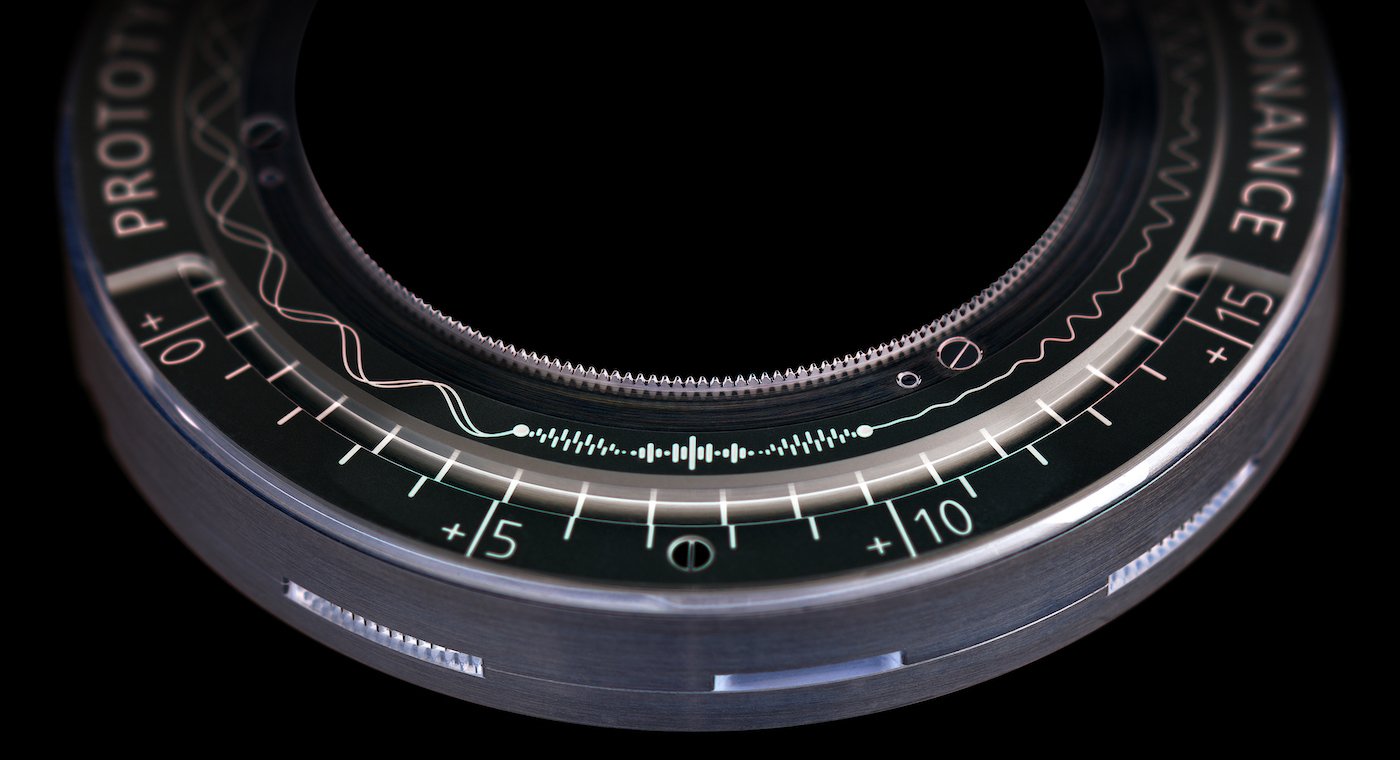
A desire to dream
But around 1992, he abandoned ship. He began working with François Junod, a poet and ingenious maker of automata, who revived his desire to dream. They worked together, travelled together, “and that opened up the doors of another world to me”.
At the same time, he had a small workshop where he worked for Franck Muller on minute repeaters, chronographs, tourbillons and grandes sonneries. He had a few customers of his own and decided to set up his own business, Janvier SA. Orders came in for musical watches and automata for Jaquet Droz and Mauboussin. The workforce grew to ten employees, but his objective was still subcontracting. For example, he worked for Audemars Piguet on a grande sonnerie that required 3,000 hours of work.
Then in 1996, the Asian crisis kicked in. He found himself out of work. He took the opportunity to learn to play the piano – hence his interest in resonance. Now, he had time to think. He tried prospecting for work, but it was difficult with all the confidentiality agreements he was forced to sign, which prevented him from demonstrating his know-how.
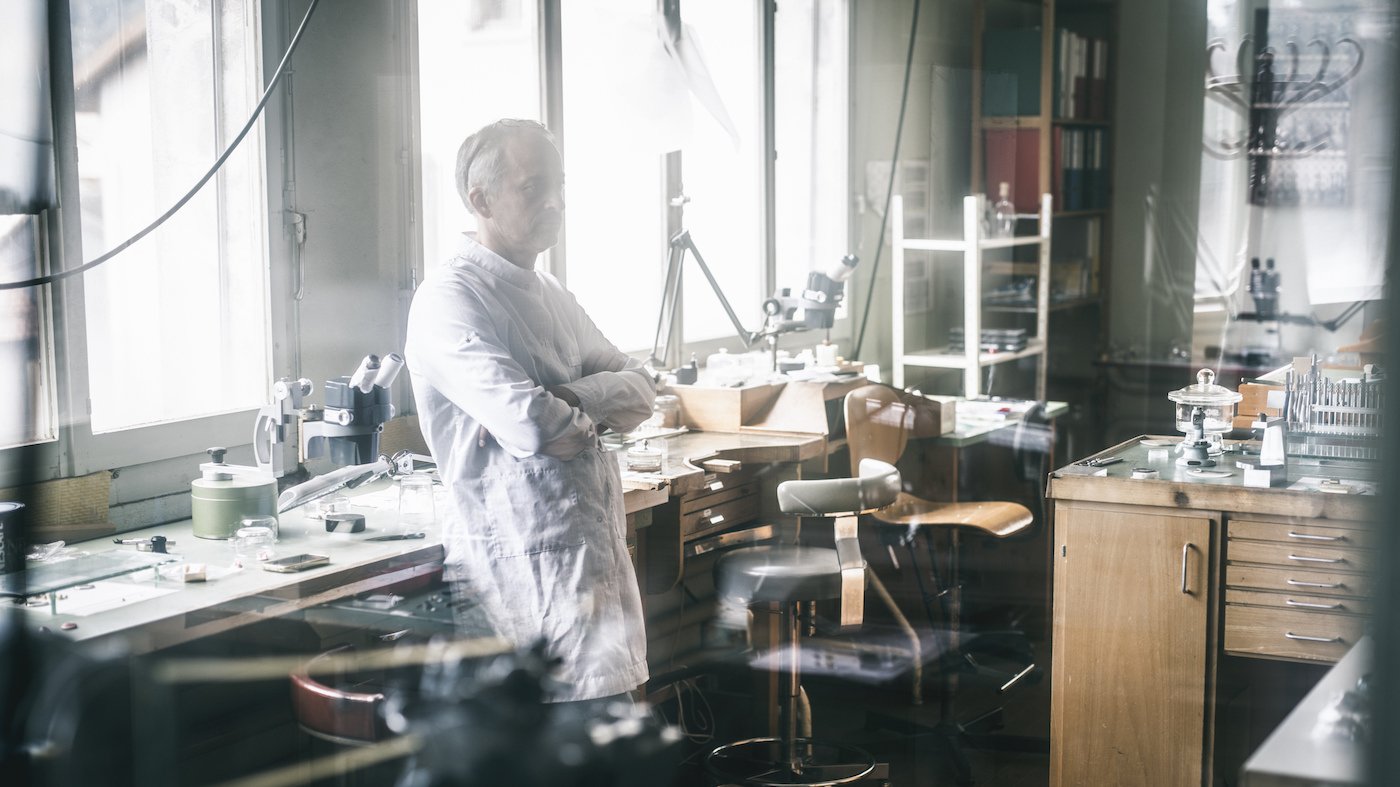
Working for himself
So he decided to make something for himself, producing a watch that demonstrated his mechanical skills and his virtuosity in terms of finishes, bevelling, form. The result was a “patronage” piece, Antiqua, equipped with a perpetual calendar of a kind never seen before. He started work on the watch and went back to show it to Philippe Dufour. The latter resolved to sponsor him on the spot, which is how Vianney came to be admitted to the AHCI (or “Horological Academy of Independent Creators”) and exhibited in Basel for the first time in 1998.
-

- The Antiqua
As a result, he found the customers for subcontracting work he was seeking, but also buyers for his watch. A coincidence once again, but his primary goal was not to become a brand. That happened without any real intention on his part. All he wanted was to showcase his know-how. There just happened to be nothing else like it on the market. He made one, then two, then three... “It came along at the right moment,” he says.
Starting from there, he decided to make another, simpler model. That was his Classique. There followed the Goldpfeil venture, forgotten today but a seminal one for numerous independents, led by Heinz Heimann on behalf of the now defunct Egana. The operation called on seven independent watchmakers from the AHCI. For it, Vianney produced 108 pieces. One thing led to another: he made the Trio, then the Opus 3 for Harry Winston.
-

- An article on Vianney Halter in Europa Star in 1999
His brand took off, leveraging other developments for third-party brands. But then, in 2010, the crisis hit. He had to make the whole team redundant and liquidate Janvier SA. But the idea for the Résonance was slowly developing, resonating in his head. He would take ten years to develop it.
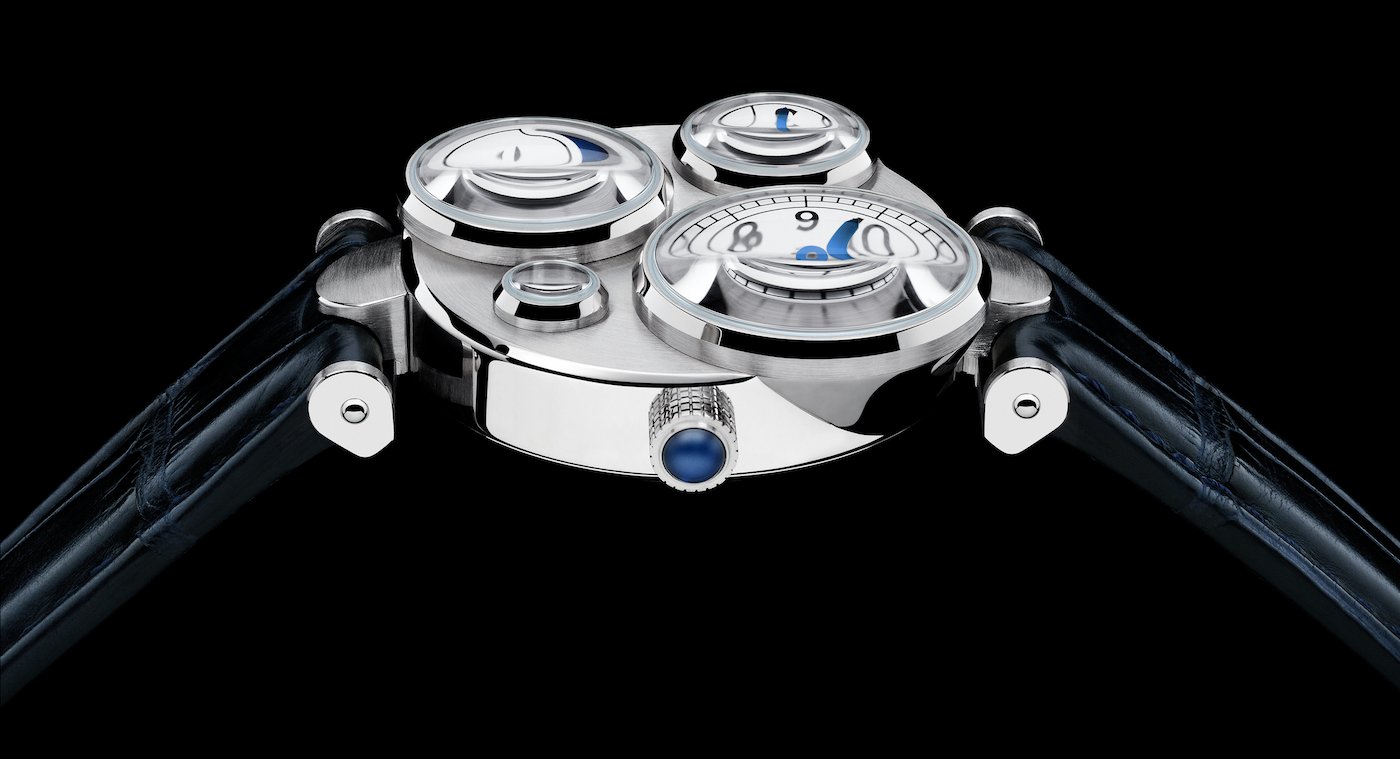
The Résonance
The Deep Space Resonance watch is still no more than a “prototype” in Vianney Halter’s cluttered workshop. But it has come a long way. The idea of building an acoustically resonant twin balance occurred to him back in 1996 while playing and tuning a piano.
From then on, it slowly matured via the detailed study of Breguet’s work, the first concrete ideas and the design of a demonstrator using two Russian deck watches. Then the routine business of running a brand got the upper hand and drew him away from his research.
-

- Classic Anniversary
But in 2012 he picked up the threads again, enlisted the help of historian Jean-Claude Sabrier and acquired a clock dating from the 1660s that had been commissioned by Christiaan Huygens to demonstrate his theory of isochronism – an object that for him was “one of the historical pieces at the very basis of the idea of acoustic resonance in watchmaking”.
-

- Classic
Taking things one step further, Vianney turned to the cosmos (an artistic and scientific soul, he is also a sci-fi fan). The year was 2016 and the gravitational waves that Einstein had predicted in theory a century previously had just been detected. These are in a way the “general resonance” of the universe and are propagated in all directions at the speed of light.
Excitedly, Vianney went back to his Russian demonstrator in search of the best possible configuration for setting two balance wheels in acoustic resonance with one another “without the help of air”. One thing became evident: the resonant mechanism he was in the process of developing had to be set in the Deep Space Tourbillon, his triple-axis central tourbillon released in 2013.
-

- Deep Space Tourbillon
It would take him a few more years to fully develop his idea. In early 2019, the two balance wheels of his demonstrator functioned steadily in acoustic resonance and were ready to be transposed into a wristwatch. He built his prototype in 2020. And today he is sharing it “in order to resonate”, as he says, tongue in cheek, “with people who are crazy about science and mechanics”.
-

- The Deep Space Resonance
